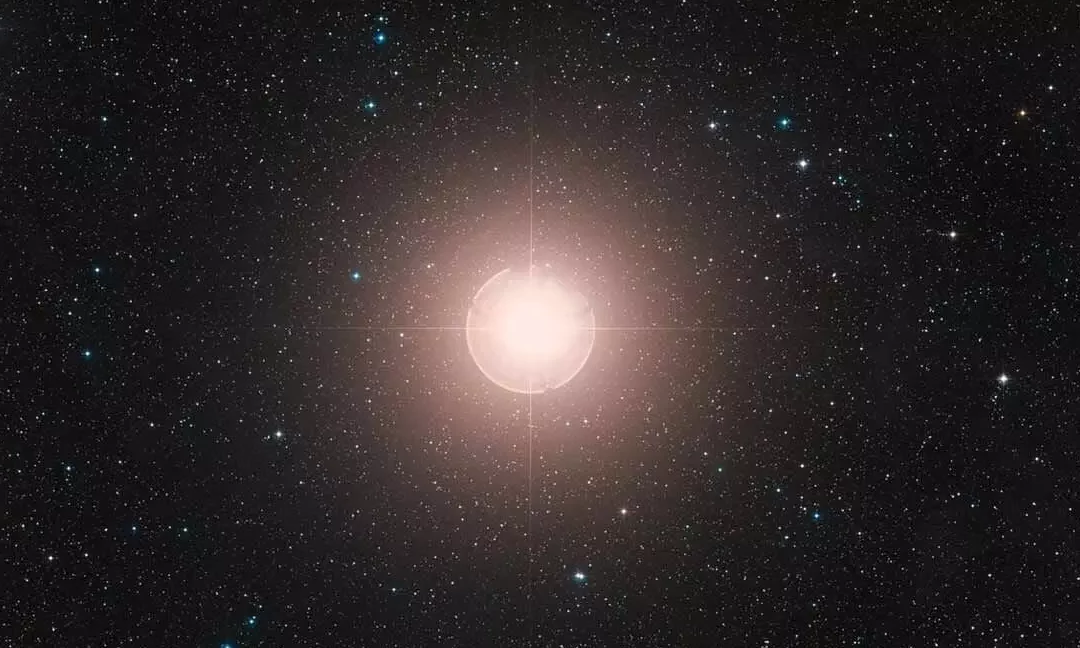Imagine yourself in the southern part of Russia, where the nights are perpetually dark. In this mesmerizing setting, one can easily become captivated by the vastness of the starry sky. Particularly on moonless nights, when the air is still and clear, the eye can behold an enchanting spectacle of stars scattered across the heavens. These celestial formations are so captivating that one might even be inspired to create intricate patterns and geometric figures out of them. And as if to add to this ethereal display, the Milky Way gracefully serves as a backdrop to this celestial splendor…
However, how can one effectively navigate through this breathtaking display? Those who have delved into the study of constellations within urban areas are well aware of the stark contrast between the celestial beauty that lies beyond the reach of city lights. Where the naked eye may spot a single star amidst the cityscape, venturing outside the city reveals a multitude of three, five, even ten stars! Unraveling the tapestry of constellations amidst this sea of lights can be quite the challenge. Of course, for those who are unfamiliar with the night sky, they can simply revel in the spectacle without the need to locate a specific star. But what about those who desire to learn about the starry sky despite their lack of knowledge?
In this case, it is best to start with a simple approach. One such approach is to focus on studying the brightest stars. These stars possess a brilliance that rivals that of a star of the first magnitude or even brighter. In the entire expanse of the sky, there are only a few dozen stars that meet this criteria, making them relatively easy to commit to memory.
What stars can be observed in the evening sky in July, after sunset?
First, we should turn our gaze to the western horizon, towards the late evening twilight.
Arcturus
To the left of the twilight, high in the sky, you will discover a brilliant reddish or orange-colored star. This celestial object is known as Arcturus. Arcturus is both the brightest star in the northern celestial hemisphere and the fourth brightest star in the entire night sky (including the unseen southern stars).
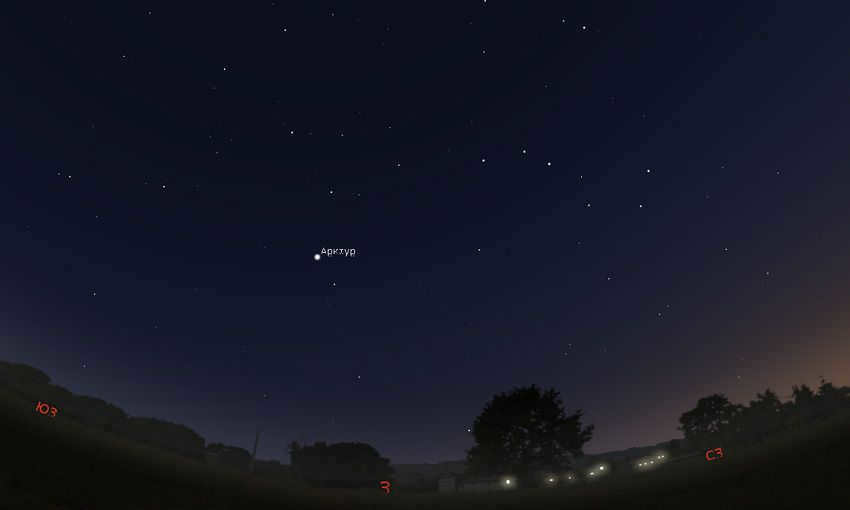
Arcturus, a brilliant celestial body, can be seen high in the western sky during the evenings of July. Image: Stellarium
Arcturus is classified as a spring star, which means that it is most visible in the southern sky during the spring months of April and May. However, as the Earth orbits the Sun, the positioning of stars and constellations changes, and the summer constellations take their place. In July, Arcturus can be observed in the southwestern sky shortly after sunset and remains visible until late into the night when it sets in the northwest.
Summer Triangle
In the southern part of the sky, there is a large triangle formed by three bright stars that are positioned high up. This celestial figure is known as the Summer Triangle (it is also referred to as the summer-fall triangle or the Large Summer Triangle).

In July, you can observe the Summer Triangle in the southern part of the sky. This celestial figure is formed by three prominent stars – Vega, Deneb, and Altair. The Summer Triangle is particularly notable because the Milky Way passes through it. This information is based on data from Stellarium.
During the evening, the two stars that create the base of the triangle are positioned very high in the sky, almost at the zenith. The star on the right side, known as Vega, is especially bright. It is only slightly less brilliant than Arcturus and ranks as the fifth brightest star in the entire night sky. Vega is the primary star in the graceful constellation Lyra.
Altair, the third star in the Summer Triangle, is situated at the midpoint between the zenith and the horizon. It is a prominent feature in the constellation of the Eagle. Altair, along with Vega and Arcturus, is among the nearest stars to our Solar System. On the other hand, Deneb is located at a considerable distance from us.
The Summer Triangle not only adds beauty to the summer night sky, but also serves as a valuable guide. By using the Summer Triangle as a reference point, one can easily locate other constellations such as Hercules, Serpens, Sagitta, Aquila, Delphinus, and many others. Moreover, the Summer Triangle will remain visible in the evening sky until the end of November!
Antares: The Stellar Center of Scorpius
A distinctive celestial body can be observed exclusively in the southern region of Russia. I am referring to Antares, the primary star within the Scorpius constellation. Antares ascends to a significant altitude south of Voronezh during the month of July, allowing its radiance to become perceptible. However, at latitudes equivalent to Moscow and St. Petersburg, Antares experiences a notable reduction in luminosity due to atmospheric extinction.
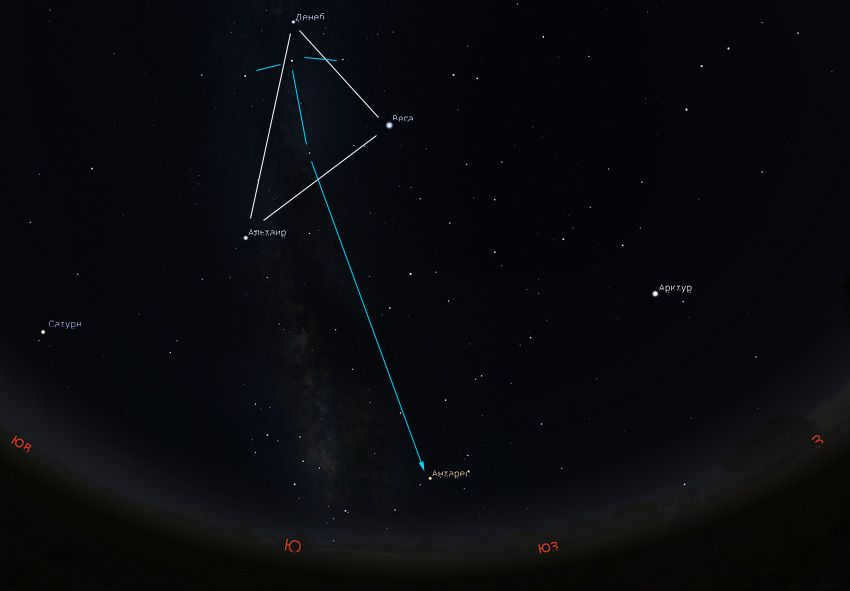
The South of Russia offers a clear view of the bright star Antares, which can be easily located by the constellation of the Swan. This information is based on the data provided by the Stellarium application.
Locating Antares is a simple task: it can be found at the base of the Swan’s cross, which represents the head of the bird. In ancient maps, Antares was depicted as the central star of the celestial Scorpio, symbolizing its heart.
One of the star’s most striking features is its distinct reddish color, which gives it a resemblance to the planet Mars. This is why the Greek translation of Antares is “anti-Ares” or “rival of Mars!”
Capella
Capella, the primary star in the constellation of Ascendant, can be seen in the evening sky. It appears low above the horizon in the north. In cities like Moscow and St. Petersburg, it hovers above the evening twilight. Capella is known as the last bright star in this region of the sky.
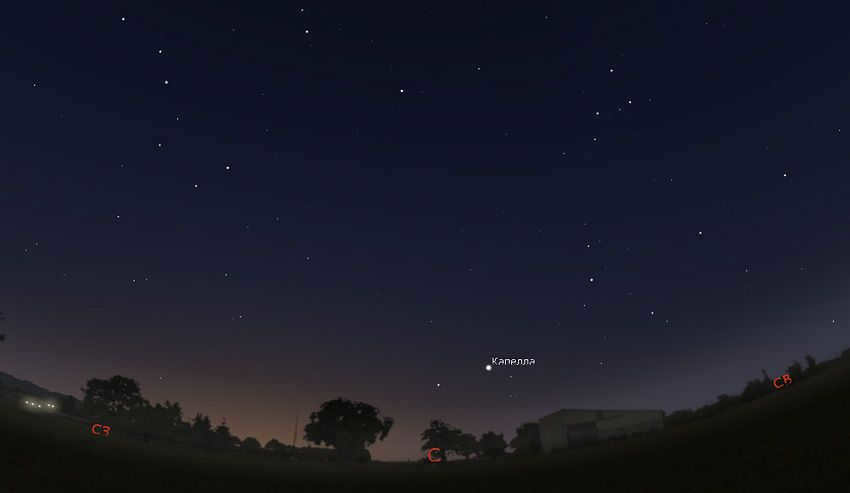
During the summer nights, Capella can be seen sailing just above the horizon in the northern part of the sky. This bright star creates a stunning view for stargazers. As shown in the Stellarium figure, its presence adds a touch of beauty to the summer sky.
However, it’s important to note that Capella is a winter constellation. In about six months from now, it will move to the southern part of the sky and shine almost directly overhead. This celestial shift makes it a prominent feature in the winter night sky, providing a completely different experience for skywatchers.
Planetary sights in the July heavens
The July sky often treats stargazers to the captivating presence of shining planets. The year 2022 proves to be no different, although these astronomical wonders are not visible during the evening hours. Instead, they begin to rise just after midnight. During the nocturnal and early morning hours of July, four luminous planets can be marvelled at simultaneously – Saturn, Jupiter, Mars, and Venus (in that order from south to east). Standing out among them is the resplendent planet Jupiter, which graces the eastern horizon after midnight and remains visible until sunrise. Jupiter shines with remarkable brilliance, outshining the aforementioned stars by a significant margin.
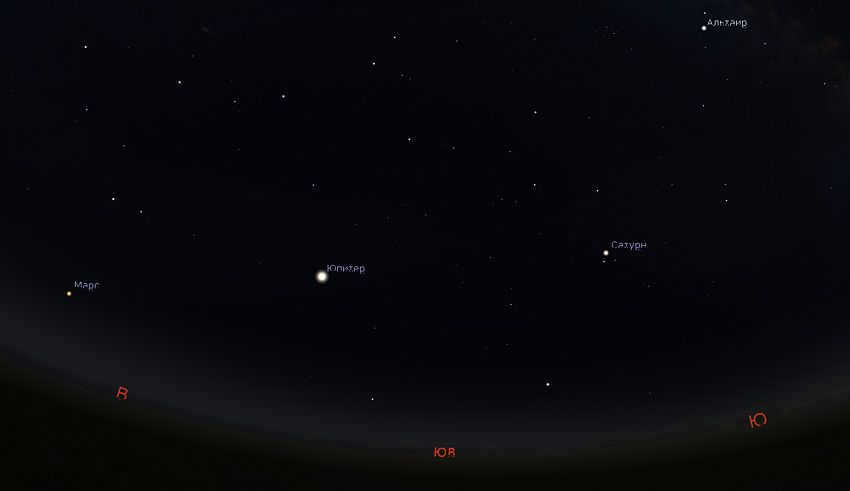
In July 2023, the celestial bodies Saturn, Jupiter, and Mars will be visible in the sky. This information is based on the data provided by Stellarium.
Among these planets, Saturn and Mars resemble the brightest stars. Venus, despite being the brightest planet, is not as easily visible as the other three because it rises during the early morning hours, against the backdrop of the dawn.
However, in the same period of 2023, only two planets, Saturn and Jupiter, will be present in the sky!

Do cumulus clouds a) have domes of bright white color b) reach a height of 8 km c) resemble thin white threads?
The CURRENT CLOUDS a) possess a dome-like structure of bright white color b) attain an altitude of 8 km c) exhibit the resemblance of thin white threads.

Which flags consist of three stripes in the colors: blue, green, green, white, and red?
Which flags can be created using the colors blue, green, white, and red, and consist of three stripes?

Which colors are utilized for painting the area between isobaths on physical maps a)varieties of green b)varieties of yellow and brown c)varieties of blue and blue d)varieties of gray?
What are the colors of the space between isobaths on physical maps a)varieties of green b)varieties of yellow-brown c)varieties of blue and blue d)varieties of gray.

What is the most luminous star in the sky?
Which star in the sky is considered the brightest.

Can you identify 6 countries with flags that consist of three horizontal colors, specifically white, blue, and red?
Name 6 countries whose flags consist of three horizontal colors – white, blue, and red.
These colors can be arranged in any order.

Are there any flags with three stripes in the colors of green, white, white, blue, blue, red?
Are there any flags with three stripes in the colors of green, white, white, blue, blue, red.

What is the reason for the use of different colors to represent land and water on a geographical map?
What is the rationale behind the utilization of dark green to dark red colors for land and soft blue to purple colors for water on a geographic map?

1. Which natural area is indicated by the color blue?
1. What natural area is marked with the color blue?
2. What is a shared characteristic among the people of a particular country?

Which statement is correct?
Please identify the correct statement.
Regarding Polaris, 3) it is the brightest star in the Northern Hemisphere, 1) it is located in the constellation Big Dipper, and 2) it is located in the constellation Little Dipper.

1) What are celestial bodies called that emit their own light?
2) Which celestial body is the closest to Earth?
3) In what ways do celestial bodies differ in terms of size and color?
Can you please assist me promptly?
You are currently viewing a page with the question “What color do the brightest celestial bodies have?” which falls under the Geography category. The difficulty level corresponds to the curriculum for students in grades 10-11. Here, you can find not only the correct answer but also explore the user options, engage in topic discussions, and choose the most suitable version. If you cannot find a comprehensive answer to cover the topic, you can use the intelligent search feature, which will display all similar answers, or create your own question by clicking the button at the top of the page.

This area is divided into four climatic zones that run along the lines of latitude. Due to the Asian continent’s influence, the northern Indian Ocean has a monsoon climate, which brings frequent cyclones to the coastal areas. You.

The continent of Africa is home to three major races, with the Negroid race being the most prevalent. This race is particularly common in former European colonies such as South Africa.

It is not difficult at all, here you have it.

Nelson is a river located in Canada, stretching 640 kilometers in length. It originates from Lake Winnipeg and empties into Hudson Bay. The river serves as a drainage system for the Bow-Saskatchewan-Nelson lake-river system, covering an area of 1072 thousand km2. Nelson River is known for its rapids and the average water flow at its mouth measures 23…

Here’s the postscript. It can be located online.))

The indications of steady, cloudless, precipitation-free weather are as follows: – during clear weather, the frost intensifies each day, with the atmospheric pressure slowly rising, and small, jagged cumulus clouds start to form, accompanied by a north-east or east wind; – the temperature….

14 A 15 B 16 A 17 C 18 B 19 D 20 B 21 Alice 22 Brummie 23 Hawaii 24 dog 25 COP.
© 2000-2023. Reference is required when using materials in whole or in part. 16+
The website is safeguarded by reCAPTCHA technology, which is subject to Google’s Privacy Policy and Terms of Use.
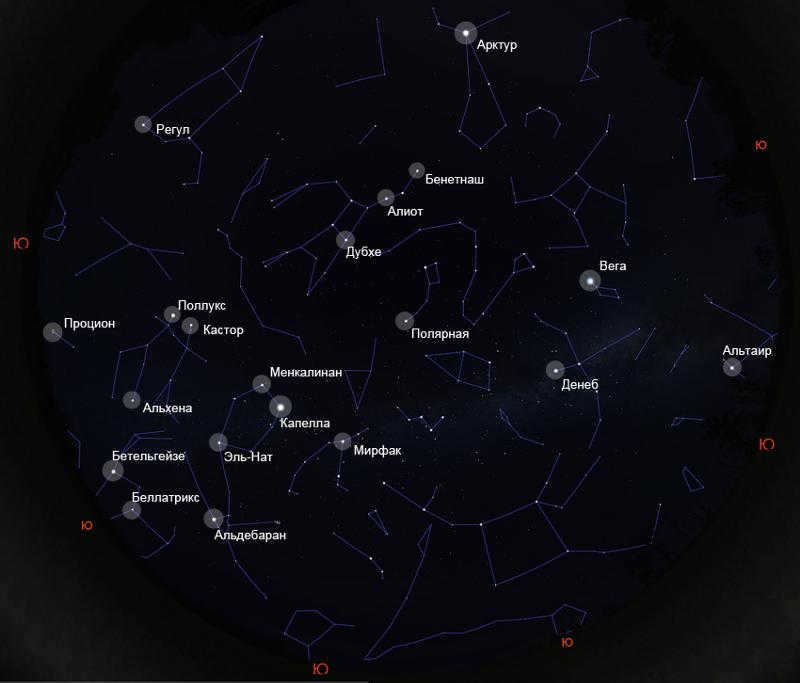
- Starry Celestials
During a clear evening, the deep sky is adorned with shimmering stars, which appear to be countless in number. However, astronomers have already determined that the naked human eye can only perceive around 6 thousand stars without the aid of telescopes. Moreover, not all of these celestial bodies are visible from both the Northern and Southern hemispheres of the Earth. Some stars remain perpetually concealed beyond the horizon. Nonetheless, this does not diminish the beauty of the nocturnal sky. Certain stars captivate observers with their luminosity.
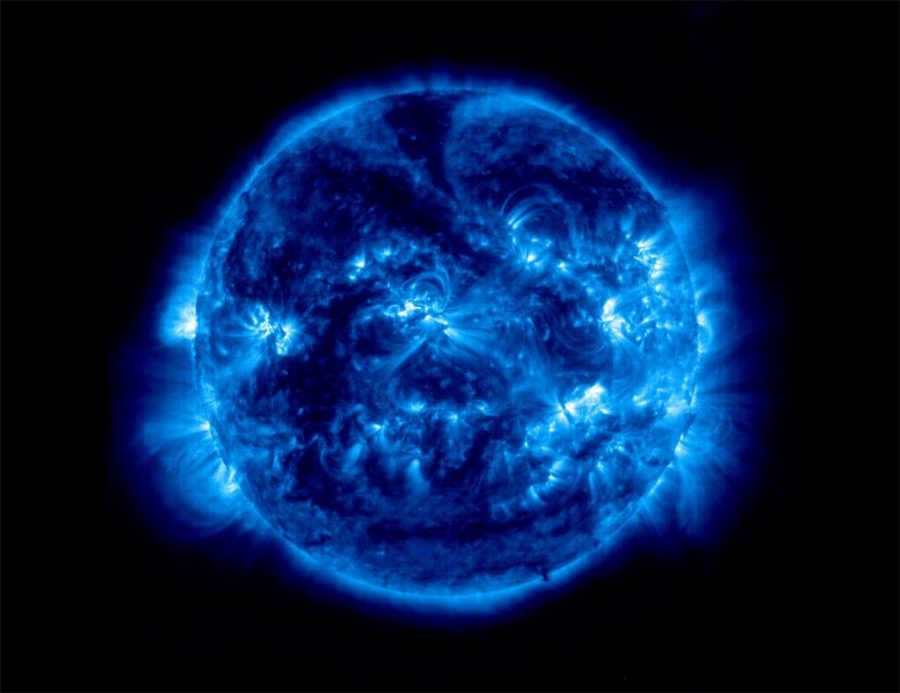
- Also known as: α of Leo
- Visible brightness: 1.35
- Distance from our Sun: 77.5 light-years.
Regulus, the most luminous star in the Leo constellation and one of the most brilliant stars in the night sky. It is located approximately 77.5 light-years away from our solar system. The name Regulus comes from Latin and means “prince”. In Arabic, it is known as Kalb Al Asad (قلب الأسد), which translates to “heart of a lion”. Sometimes, it is referred to by its Latin translation, Cor Leonis. Regulus is classified as a first magnitude star, being the last on the list, as the next brightest star, Adara, has an apparent magnitude of 1.50m, placing it in the second magnitude category.
Regulus, which is approximately 3.5 times more massive than the Sun, is a relatively young star with an age of just a few hundred million years. Its rapid rotation, with a period of only 15.9 hours, causes it to have a highly flattened shape, resembling a pumpkin. This phenomenon, known as gravitational darkening, results in the star’s poles being much hotter and five times brighter (per unit surface area) than its equator. Interestingly, if Regulus were to rotate just 14% faster, the centripetal gravitational force would not be sufficient to prevent the star from collapsing. The axis of rotation of Regulus is nearly aligned with its direction of motion through space, and it has been observed that this axis is perpendicular to our line of sight. Therefore, we view Regulus from an edge-on perspective.
Deneb
is a star in the constellation Cygnus.
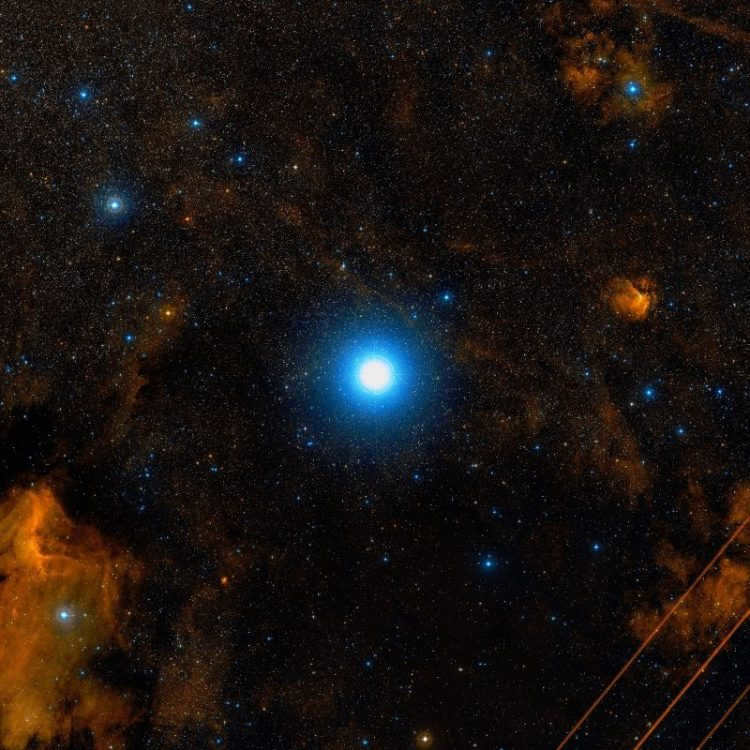
- Another name: α of the Swan.
- Visible brightness: 1.25.
- Distance from the Sun: approximately 1550 light-years.
The term Deneb is derived from the Arabic word dheneb (“tail”), which originates from the phrase ذنب الدجاجة dhanab ad-dajājat, meaning “tail of the chicken”. This particular star is the most brilliant in the constellation of Swan, standing as the ninth brightest star in the northern hemisphere and twentieth overall in both hemispheres. Alongside Vega and Altair, Deneb creates the “summer-autumn triangle”, which can be observed in the Northern Hemisphere during the summer and autumn seasons.
The precise measurement of the distance to Deneb continues to be a subject of debate in the scientific community. While most stars that are equidistant from Earth are not visible to the naked eye and can only be identified through catalogs, if they are known at all, Deneb’s exact distance remains uncertain. Various sources on the internet provide different estimates ranging from 1340 to 3200 light years. However, recent advancements in parallax measurements have narrowed down the distance to a range of 1340 to 1840 light years, with the most likely value being 1550 light years.
If Deneb were positioned as a point source of light at the same distance from Earth as the Sun, it would shine much brighter than most industrial lasers. In fact, it emits more light in a single Earth day than the Sun does in 140 years. If it were located at the same distance as Sirius, it would appear even brighter than the full Moon.
The estimated mass of Deneb is believed to be between 15 and 25 times that of the Sun. Being a white supergiant, Deneb has a short lifespan due to its high temperature and mass, and it is expected to go supernova in a few million years. The thermonuclear reactions involving hydrogen in its core have already ceased.
Annually, Deneb loses approximately 0.8 millionths of its mass through stellar wind, which is a hundred thousand times more than the Sun.
Pollux
Pollux is the brightest star in the constellation Gemini and one of the two stars that form the constellation’s twin brothers, Castor and Pollux. It is a giant star with a magnitude of 1.14, making it one of the 25 brightest stars in the night sky. Pollux is located approximately 33.78 light-years away from Earth.
Pollux is an interesting star because it is a red giant, which means that it is in the later stages of its life cycle. It has exhausted the hydrogen fuel in its core and has begun to burn helium. This causes the star to expand and become brighter. The expansion of Pollux has caused it to become about nine times larger than our Sun.
Pollux is also interesting because it is orbited by a planet, known as Pollux b. This planet is a gas giant, similar to Jupiter, and orbits its star at a distance of about 1.64 astronomical units. It takes Pollux b approximately 590 days to complete one orbit around its star.
In addition to its planet, Pollux has a companion star, known as Pollux B. This companion star is a red dwarf and is located about 1,600 astronomical units away from Pollux. Despite its distance, Pollux B is thought to have formed with Pollux and may have influenced the evolution of the star.
Overall, Pollux is a fascinating star with its red giant status, planet, and companion star. It continues to be a subject of interest and study for astronomers.
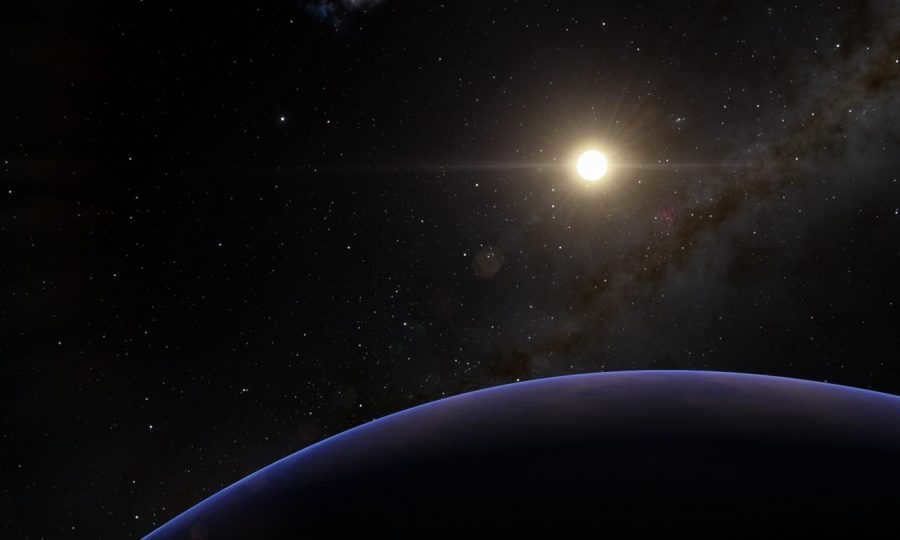
- Also known as: β Gemini.
- Visible brightness: 1.14.
- Distance from our Sun: 40 light years.
Pollux is the most brilliant star in the Gemini constellation, and it is classified as an orange giant of spectral class K0 IIIb. It is worth noting that the name Pollux originated from one of the legendary twins of Dioscurus, Polydeucus, whose father was Zeus and mother was Leda. Extensive research was conducted in 2006 to gather accurate information about this particular star. During that time, it was discovered that Pollux has an exoplanet within its star system.
Aldebaran
Aldebaran is a bright orange giant star located in the constellation Taurus. It is one of the brightest stars in the night sky and is easily visible to the naked eye. Aldebaran is about 44 times larger than the Sun and emits about 425 times more energy. It is also a relatively young star, with an estimated age of about 625 million years. Aldebaran is often referred to as the “eye of the bull” because it marks the eye of the constellation Taurus. In ancient times, Aldebaran was used as a navigational aid for sailors, as its position relative to other stars helped determine their location. Today, Aldebaran continues to fascinate astronomers and stargazers alike with its beauty and significance in the night sky.
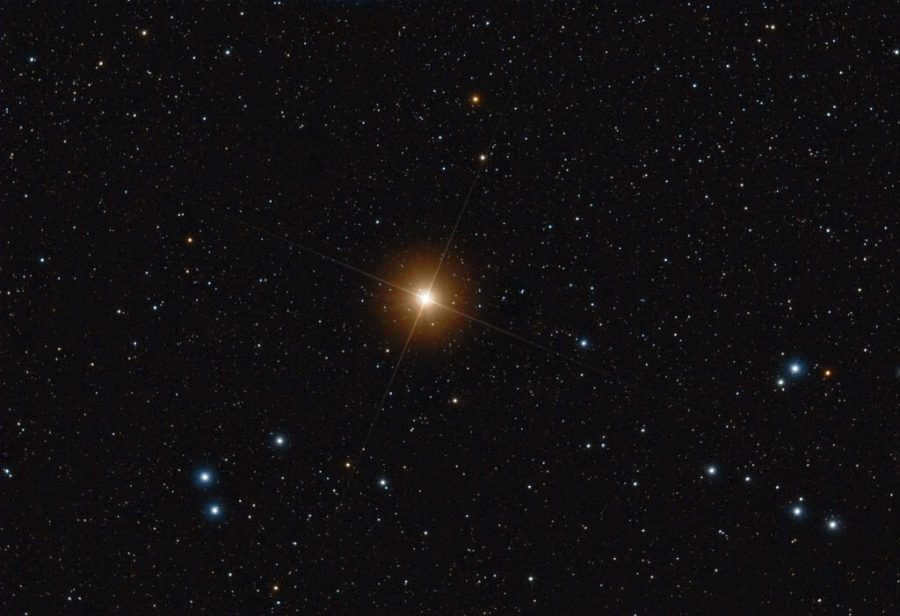
- Other name: α of Taurus
- Visible brightness: 0.85 (changing)
- Distance from the Sun: 65 light years
Aldebaran is among the most brilliant stars in the entire zodiac, with a name originating from an Arabic term that means “follower”. The utilization of the Hipparcos satellite enabled scientists to establish the distance between this star and Earth, which measures 65.1 light years, as well as its luminosity, which is 150 times greater than that of the Sun.
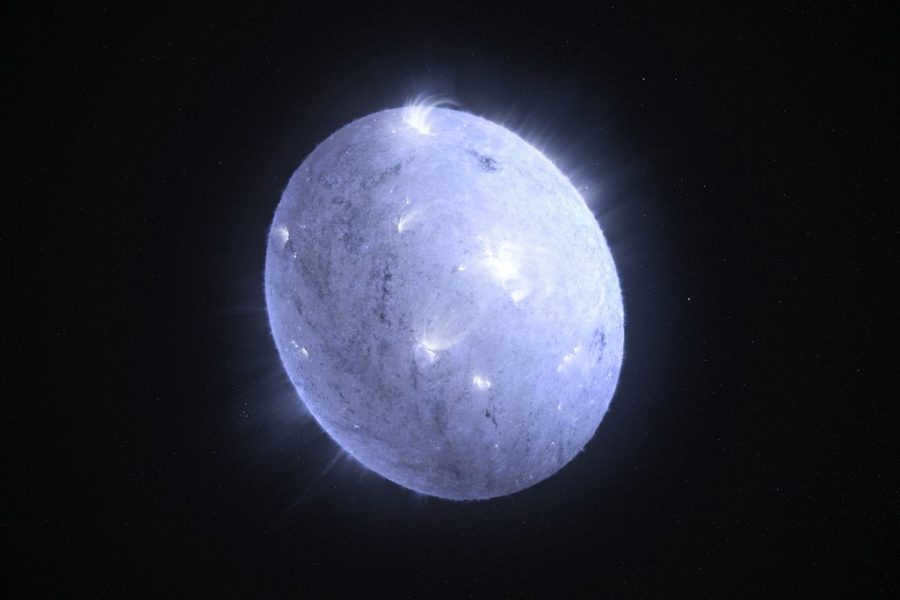
- Also known as: α of Eagle
- Apparent magnitude: 0.77
- Distance from the Sun: 18 light years
Altair is a star that can be easily seen without the aid of a telescope. It is part of a group of stars known as the Aquila family, which includes Beta Eagle and Tarazed. Altair is also one of the three stars that form the Summer Triangle, along with Deneb and Vega.
Altair is known for its incredibly fast rotation, with its equator reaching speeds of up to 210 kilometers per second. This means that Altair completes one full rotation in just 9 hours, while the Sun takes over 25 days to complete a rotation at its equator. This rapid rotation causes Altair to have a slightly flattened shape, with its equatorial diameter being 20 percent larger than its polar diameter.
Altair belongs to the spectral class A7Vn and has a surface temperature of 7500° Kelvin. It has a luminosity that is 10.6 times greater than that of the Sun. Altair’s mass is 1.79 times that of the Sun, and its diameter is 1.9 times larger.
Betelgeuse
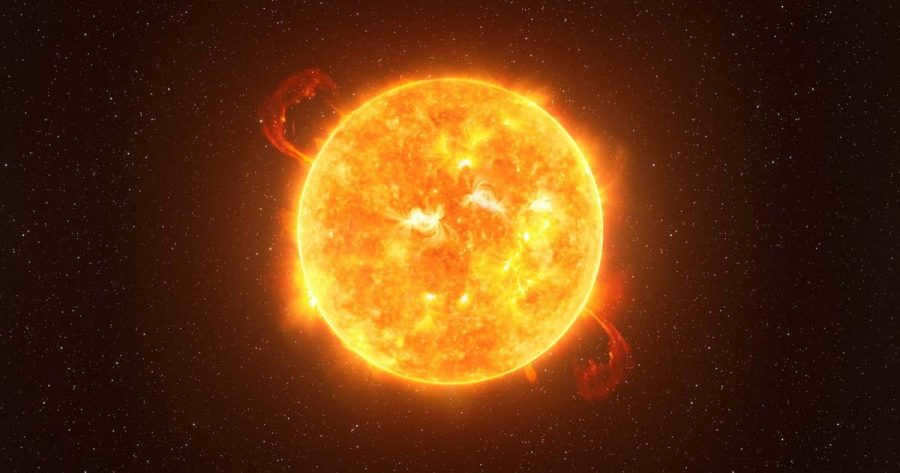
Betelgeuse, located in the constellation of Orion (Alpha Orion), is an extraordinary star that exhibits variable brightness. Its apparent magnitude can range from 0m to +1.6m, making it one of the top ten brightest stars in the night sky. What sets Betelgeuse apart is its distinct reddish hue, standing out amidst the hot blue-white stars of Orion. This captivating star is situated approximately 700 light-years away from Earth.
Betelgeuse, the largest star visible to the naked eye, has a radius that would be approximately the same as the orbit of Jupiter in the Solar System. It was the first star, aside from the Sun, to have its transverse dimensions measured and to be perceived as more than just a point object in the early 20th century. Betelgeuse is a red supergiant in the final stage of its evolution, which is expected to culminate in a supernova explosion. However, this event is projected to occur in the next few thousand or tens of thousands of years, and it is currently impossible to predict the precise day of its occurrence. Some news sources, including Russian ones, have mistakenly stated that the star’s explosion is expected in the next week. These reports likely arose from a misinterpretation of astronomical news and a lack of understanding of the subject matter by the authors. In addition to Betelgeuse, there are several other supergiant stars near the solar system that could also explode as supernovae of this kind (such as Spica, Antares, Rigel, etc.), and there have been several documented supernova explosions in historical times.
Procyon
Procyon, also known as Alpha Canis Minoris, is a binary star system located in the constellation Canis Minor. It is the eighth brightest star in the night sky and is located approximately 11.4 light-years away from Earth. Procyon is a yellow-white main sequence star and is smaller and less massive than our Sun. The star’s name comes from the Greek word for “before the dog” because it rises before the “Dog Star,” Sirius, in the night sky. Procyon is known for its relatively high proper motion, meaning that it appears to move across the sky faster than most other stars. It is also one of the closest star systems to our Solar System. Procyon is a popular target for amateur astronomers and has been extensively studied by professional astronomers. Its binary companion, Procyon B, is a faint white dwarf star that was discovered in 1896.
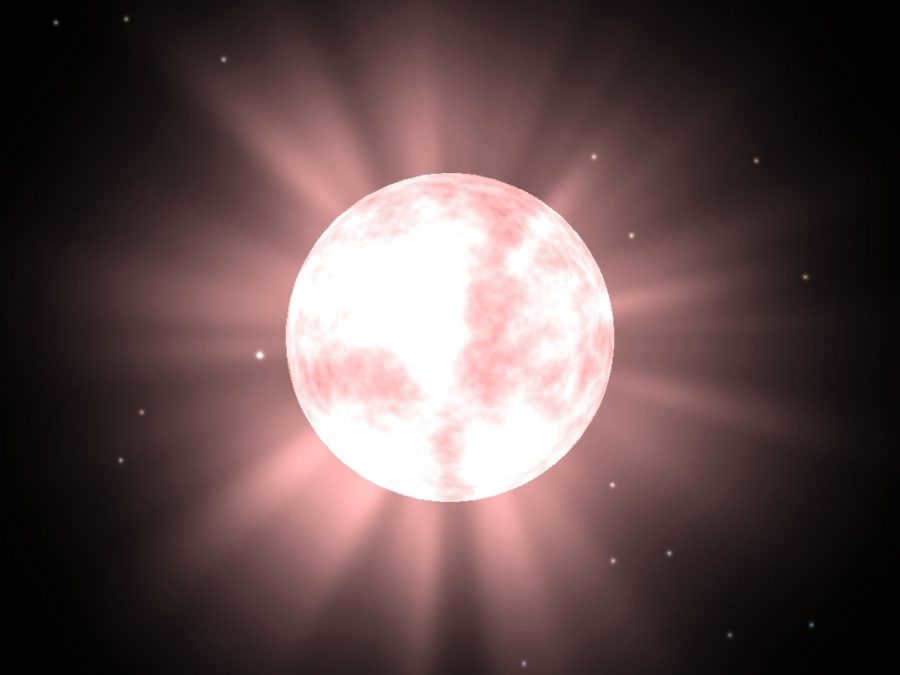
- Alternate name: α of the Lesser Dog
- Apparent magnitude: 0.38
- Sun distance: 11.46 light years
To the unaided eye, Procyon appears as a single star. However, Procyon is actually a binary star system composed of a main-sequence white dwarf known as Procyon A and a dim white dwarf known as Procyon B. Procyon appears exceptionally bright not due to its luminosity, but because of its close proximity to the Sun. The system is situated at a distance of 11.46 light-years (3.51 parsecs) and is one of our closest neighboring systems.
Procyon is the 8th brightest star in the night sky, shining like 8 suns. It has a luminosity that is 6.9 times greater than that of the Sun. The star’s mass is 1.4 times that of the Sun, and its diameter is twice that of the Sun. Currently, Procyon is moving towards our solar system at a speed of 4,500 meters per second.
Locating the Ration is a simple task that can be accomplished by facing south. Direct your gaze towards Orion’s belt and draw a line eastward from the lower star of the belt. For additional guidance, you can use the larger constellation Gemini as a reference point. The Small Dog can be found beneath Gemini when considering its position relative to the horizon. Spotting Procyon within the Dog constellation is not challenging as it is the only luminous object that stands out. Its radiance is sure to captivate your attention. Since the Small Dog constellation is equatorial, it rises relatively low above the horizon and its appearance varies depending on the time of year. Winter is the ideal season for observing this constellation.
Capella
Capella is a star system located in the constellation Auriga. It is one of the brightest stars in the night sky and is easily visible to the naked eye. Capella is actually a system of four stars, with two pairs of binary stars orbiting each other. The primary star, Capella A, is a yellow giant star, while the other three stars are smaller and less bright. Capella has a total mass about three times that of the Sun and is estimated to be about 42 light-years away from Earth. It is a popular target for amateur astronomers and has been studied extensively by scientists.
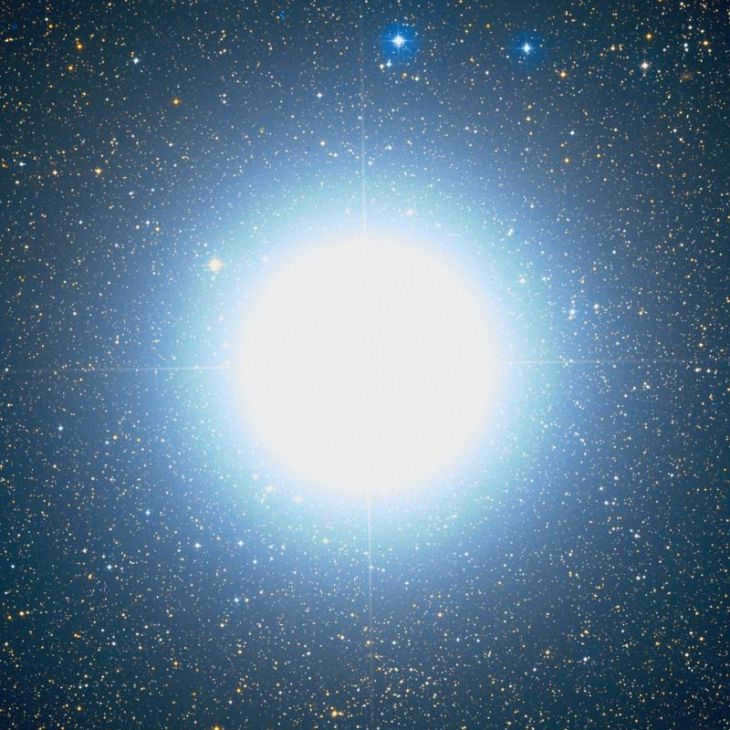
- Alternate designation: α of Ascendant.
- Observed brightness: 0.08
- Distance from the Sun: 42.6 light years
Capella, which is also known as the Goat, is the brightest star in the Ascendant constellation. It is the sixth brightest star in the entire sky and the third brightest star in the Northern Hemisphere.
Capella, also referred to as Capra and Al Hayot, is a yellow giant star. It is positioned on the shoulder of the Ascendant constellation in star charts. In ancient sky maps, a goat was often depicted on this shoulder. Capella holds a special significance in many mythological stories as it is closer to the North Pole than any other first magnitude star (with Polaris being the only exception, which is a second magnitude star).
The masses of the stars are approximately equal, with each star weighing about 2.5 times the mass of the Sun. Over time, as the stars expand into red giants, their outer shells may expand and potentially come into contact with each other.
In addition, the central stars have a faint companion, which is itself a binary star system consisting of two M-class red dwarf stars that orbit the main pair in a wide orbit spanning approximately one light-year in radius.
Between 210,000 and 160,000 BCE, Capella shone as the brightest star in the sky. Prior to that, Aldebaran held the title of the brightest star, and Canopus took over after Capella.
Vega
Rephrase the text to make it unique using the English language while preserving the HTML markup:
Vega
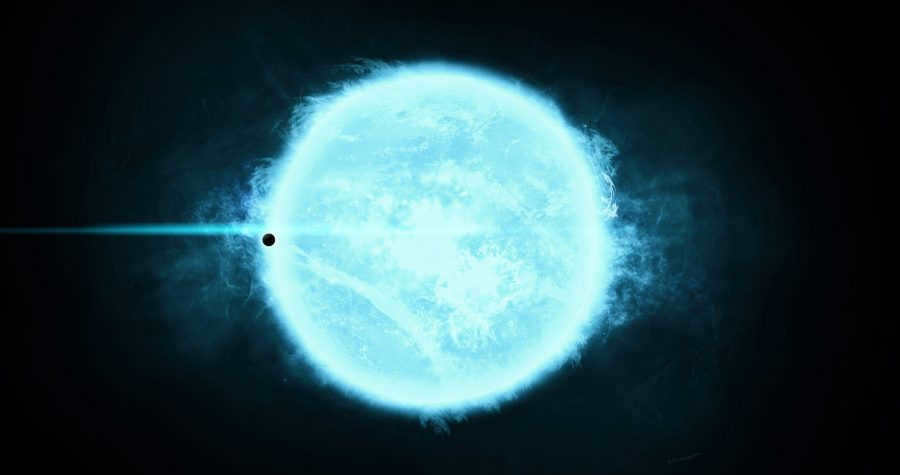
Vega, situated in the Lyra constellation in the northern hemisphere, is a bluish-white Main Sequence star known as an A0V-class star. It is twice as massive and 40 times brighter than the Sun. Ranked as the second brightest star in the Northern Hemisphere, Vega holds the fifth position in terms of overall brightness in the night sky. Around 15,000 years ago, due to the Earth’s axis precession, Vega served as the “Polaris,” meaning the Earth’s axis of rotation pointed towards it instead of pointing towards α of the Little Bear as it does in our current era. As a result, in approximately 12,000 years, the world’s pole will once again shift towards Vega.
Vega has been a subject of great historical interest, making it one of the most extensively studied stars in modern times. It holds the distinction of being the first star, other than the Sun, to be captured in a photograph back in 1850. Additionally, it was among the first stars to have its distance determined through the parallax method, which involves measuring its displacement on the celestial sphere due to the Earth’s annual motion. In the 1870s, Vega also became one of the first stars to have its emission spectrum obtained. Furthermore, Vega was previously utilized as a standard for determining apparent stellar magnitudes. Stellar magnitude is a logarithmic scale that measures brightness, with a decrease in brightness by a factor of 100 corresponding to an increase in magnitude by 5 units. For instance, a change from -1m to 4m represents a decrease in brightness and an increase in magnitude. In the case of Vega, its brightness served as the zero-point, meaning its apparent stellar magnitude was assumed to be 0m.
Arcturus
The Brightest Star in the Northern Hemisphere
Arcturus is a red giant star located in the constellation of Boötes. It is the fourth brightest star in the night sky and the brightest star in the northern hemisphere. Arcturus is also one of the closest stars to Earth, with a distance of about 37 light-years.
Arcturus is easily recognizable due to its distinctive orange-red color and its brightness. It is approximately 25 times larger than the Sun and about 113 times more luminous. Despite its size, Arcturus is relatively young, with an estimated age of about 7.1 billion years.
Arcturus has been a significant star in many cultures throughout history. In ancient Greece, it was known as the “Bear Watcher” and was associated with the mythological figure of Arcas, the son of Zeus and Callisto. In Chinese astronomy, Arcturus was considered the “Great Fire Dragon” and was associated with the emperor.
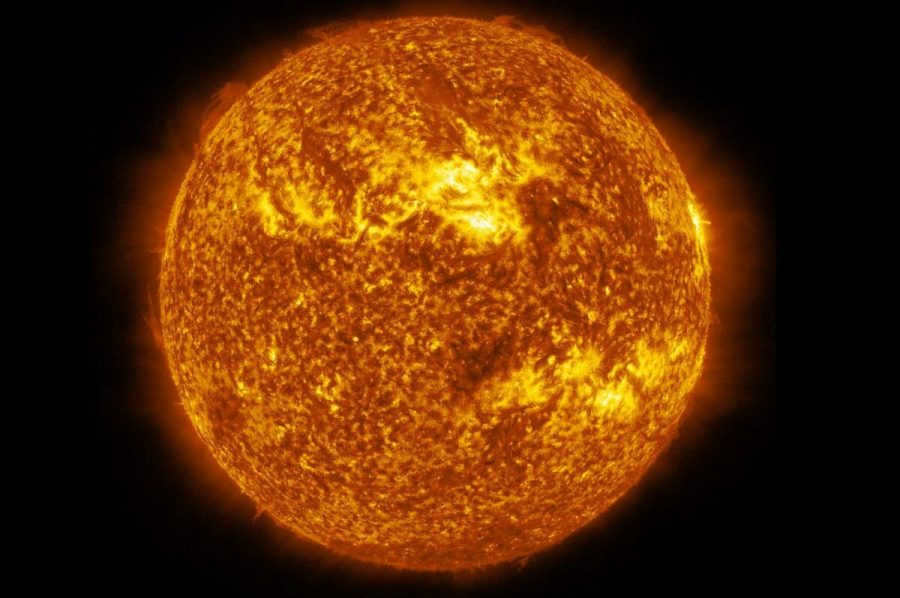
- Alternative name: α of Volopassus
- Apparent stellar magnitude: -0.05 (variable)
- Distance from the Sun: 36.7 light years
Arcturus (Alrameh, Azimeh, Colanza) is the most brilliant star in the constellation of Volopasa in the northern hemisphere, and the fourth brightest star in the nighttime sky following Sirius, Canopus, and the Alpha Centauri system. Arcturus has an apparent stellar magnitude of -0.05m. It is a part of the Arcturus star stream, which, according to Ivan Minchev from the University of Strasbourg and his colleagues, is believed to have formed as a result of the Milky Way galaxy merging with another galaxy approximately 2 billion years ago.
Arcturus, being one of the most luminous stars in the celestial sphere, presents no challenge in terms of locating it. Its brightness makes it easily visible to observers situated anywhere above the 71° south latitude, as it has a rather low north declination. To locate Arcturus in the night sky, one simply needs to trace an arc through the trio of stars that form the handle of the Big Dipper – Alioth, Mizar, and Alkaid (also known as Benetnash).
Arcturus is a type K1.5 IIIpe star, known as an orange giant. The “pe” designation refers to the star’s atypical spectrum, which includes emission lines. In terms of brightness, Arcturus is over 110 times brighter than the Sun in the optical range. It has been observed that Arcturus is a variable star, with its luminosity changing by 0.04 star magnitude every 8.3 days. Like other red giants, this variability is caused by pulsations on the star’s surface. Arcturus has a radius of 25.7 ± 0.3 solar radii and a surface temperature of 4300 K. The exact mass of the star is not known, but it is likely similar to the Sun’s mass. Arcturus is currently in the red giant phase of stellar evolution, a stage that our own Sun will reach in the future. The star is estimated to be around 7.1 billion years old (but no more than 8.5 billion years old).
Arcturus, along with over 50 other stars, resides within the Arcturus Stream, a collection of stars with varying ages and metallicities that share similar velocities and trajectories. These stars may have been captured by and assimilated into the Milky Way, along with their parent galaxy, due to their high velocities. As a result, Arcturus, a nearby and exceptionally bright star, could have originated from outside of our galaxy.
The name of this star is derived from the Greek word Ἀρκτοῦρος, which translates to “Guardian of the Bear.” According to Greek mythology, Arcturus is associated with Arcadus, who was placed in the sky by Zeus to protect his mother, the nymph Callisto, who was transformed into a bear by Hera (forming the Ursa Major constellation, also known as the Big Dipper). An alternate version suggests that Arkad is linked to the constellation Volopassus, with Arcturus being its brightest star.
In Arabic, the name for Arcturus is Haris-as-sama’, which translates to “the guardian of the heavens” (refer to Haris).
In Hawaiian, Arcturus is known as Hōkūle’a (Hōkūle’a), meaning “star of happiness.” It is noteworthy that in Hawaiian culture, this star reaches its highest point in the sky, very close to the zenith. In ancient times, Hawaiian navigators used the altitude of Hōkūle’a to guide their way while sailing to Hawaii.
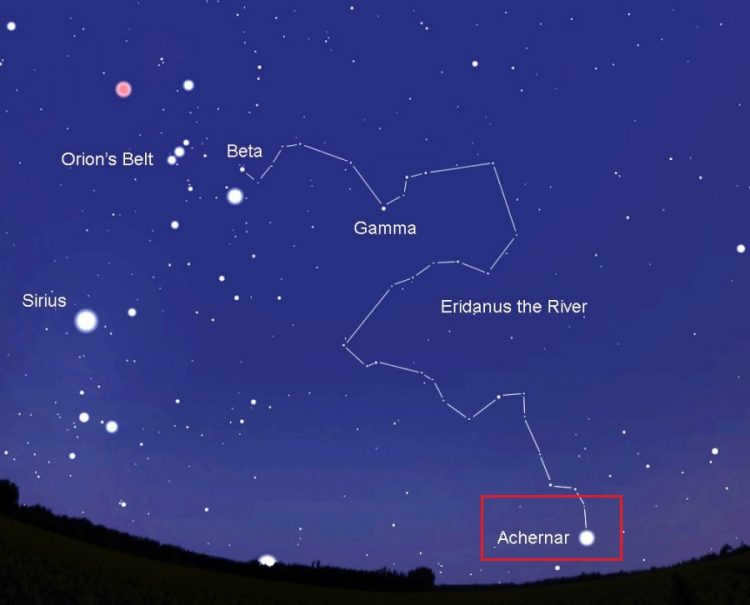
Many individuals hold the belief that the North Star, also known as Polaris, is the most luminous star in the celestial sphere. However, Polaris actually ranks around 47th on the list of brightest stars. So, which star holds the title of the brightest in the entire universe? Below is a compilation of the top 10 brightest stars visible in our night sky.
Sirius
Sirius, the Alpha star in the Canis Major constellation, not only shines the brightest within its own constellation, but also across the entire sky. One might assume that Sirius is an immense and scorching star due to its radiant luminosity. Surprisingly, this is not the case. Sirius is actually relatively close to us compared to most other stars, only residing 8.6 light years away. Its proximity to Earth is the reason why it appears so brilliantly in our night sky.
Sirius, the brightest star in the night sky in its southern part, below and to the left of the constellation Orion, becomes highly visible during the winter season. However, as spring approaches, it gradually moves westward and rises lower and lower in the sky. During the summer months, Sirius is not visible to the naked eye.
One fascinating aspect of Sirius is that it is actually a double star. Its primary component is a hot, white star that is twice as massive as our Sun and 1.7 times larger in size. Despite its brightness, Sirius is considered to be an unremarkable star in terms of its characteristics. Nevertheless, like most stars, it will eventually undergo a transformation, evolving into a red giant and then a white dwarf in approximately 660 million years.

Merely 20 astronomical units distant from this particular star lies another white dwarf, an object of great intrigue. This celestial body is known as the Puppy and completes an orbit around the star in a span of 50 years. The dimensions of this star are incredibly diminutive, resembling those of the Earth, yet it boasts the mass equivalent to that of the Sun. The density of its matter is mind-boggling – attempting to fathom it, one would find that a matchbox-sized portion would weigh a ton.
Sirius B, the first white dwarf to be detected by scientists, was initially observed in 1844 by German astronomer and mathematician Bessel. He noticed that Sirius didn’t move in a straight line across the sky, but rather exhibited a “wobbling” motion. Bessel hypothesized that this was due to the gravitational influence of a massive satellite, and his theory was confirmed in 1862 when Alvan Graham discovered Sirius B using the largest refracting telescope of that time, which had a diameter of 46 centimeters. This discovery was significant as it provided practical evidence for the theoretical laws of gravity.
Sirius B, a white dwarf star with a magnitude of 8.6, can be easily observed with a small telescope when it is farthest from Sirius A. This is also the point when the distance between the two components is at its maximum, although it is already beginning to decrease.
During ancient times, Sirius held significant significance – its morning appearance signaled to the Egyptian priests that the summer solstice was approaching, which would be followed by the flooding of the Nile and the arrival of summer heat. Known as the “dog star” in Latin, Sirius was associated with the word “canis”. Hence, the arrival of Sirius in the morning sky marked the onset of summer heat, which was seen as a period of rest from strenuous labor – a time for celebration, or what became known as the “dog days”. Interestingly, this period coincided with the rise of human fevers and an increase in cases of canine rabies, thus validating the appropriateness of the name.
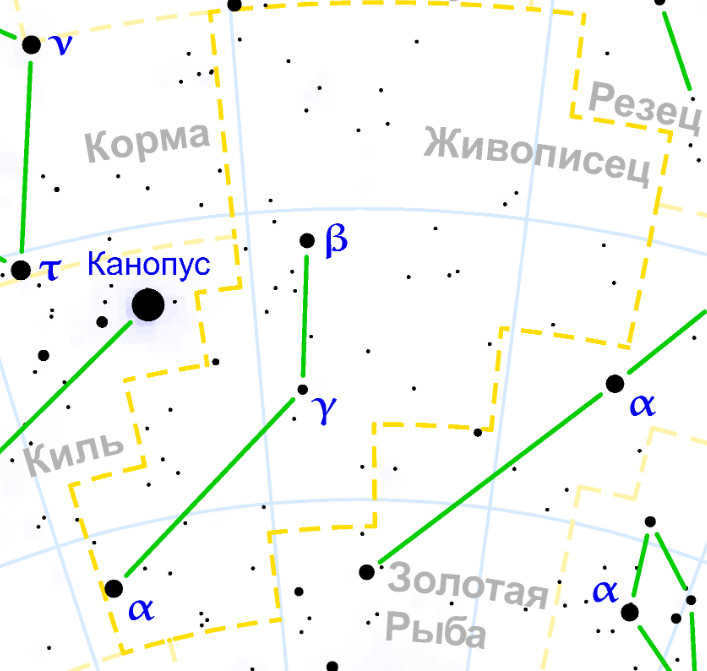
The pale supergiant Canopus (Alpha Kiel) is fifteen thousand times more luminous than our sun, so even though it is located a significant 310 light-years away, it still ranks as the second most brilliant star visible from Earth. Canopus boasts a diameter that is seventy-one times larger than that of the Sun and a mass that is ten times greater.
Alpha Centauri
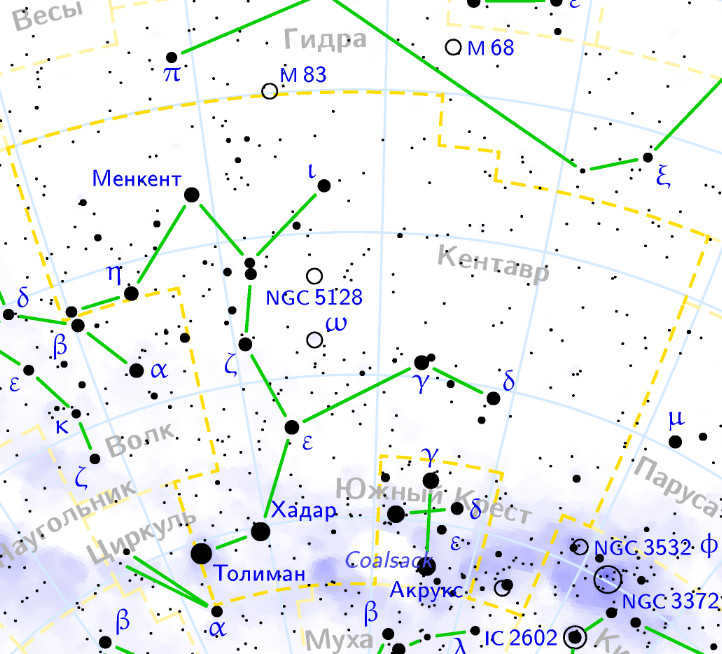
Its name implies that it is the largest star in the constellation Centauri. It has a trio of stars revolving around a shared center of mass, but when observed from Earth, it appears as a solitary star. Alpha possesses similar characteristics to the Sun and is actually less luminous compared to the other stars on this list. However, it is “rescued” by its close proximity to the Sun, which is only 4.4 light-years away, making it twice as near as the champion, Sirius.
Arcturus
Arcturus is a bright star in the constellation Boötes. It is one of the brightest stars visible from Earth and is located about 37 light-years away from us. Arcturus is an orange giant star, meaning it has exhausted the hydrogen fuel in its core and is in the later stages of its life. This makes it much larger and brighter than our Sun. In fact, Arcturus is one of the largest stars known to astronomers. Its diameter is about 25 times that of the Sun. Arcturus is also a relatively young star, estimated to be about 7 billion years old. Despite its size and brightness, Arcturus is not a particularly hot star. Its surface temperature is about 4,290 Kelvin, compared to the Sun’s surface temperature of about 5,500 Kelvin. Arcturus is visible in the northern hemisphere throughout the year and is easily identifiable due to its orange color and its position in the sky.
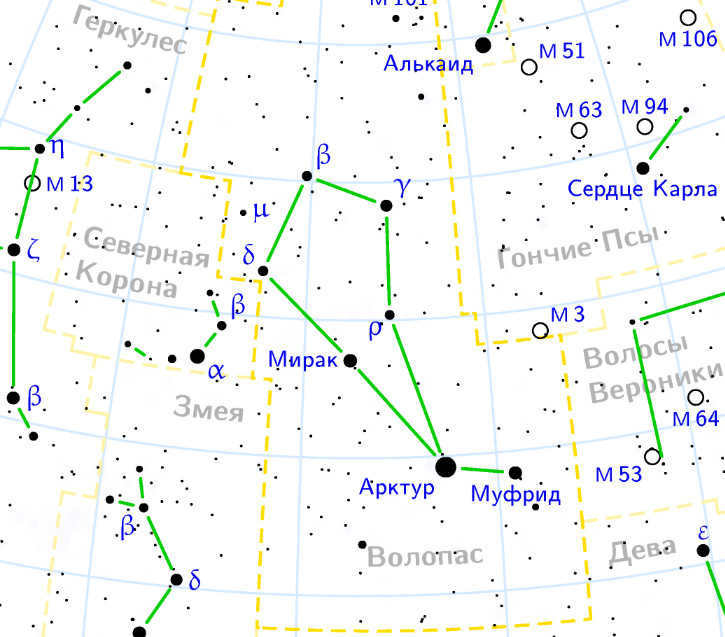
Alpha Volopas, also known as Arcturus, is a red giant star. It is among the most luminous stars in the night sky, particularly in the northern hemisphere. Arcturus can be easily located by following the handle of the Big Dipper. In terms of brightness, Arcturus surpasses the Sun by a factor of 110. As it progresses through its life cycle, Arcturus will continue to shine even more brightly, surpassing its current luminosity. Arcturus is located at a distance of less than 37 light-years. While there are only three stars that outshine Arcturus, they are visible exclusively in the southern hemisphere.
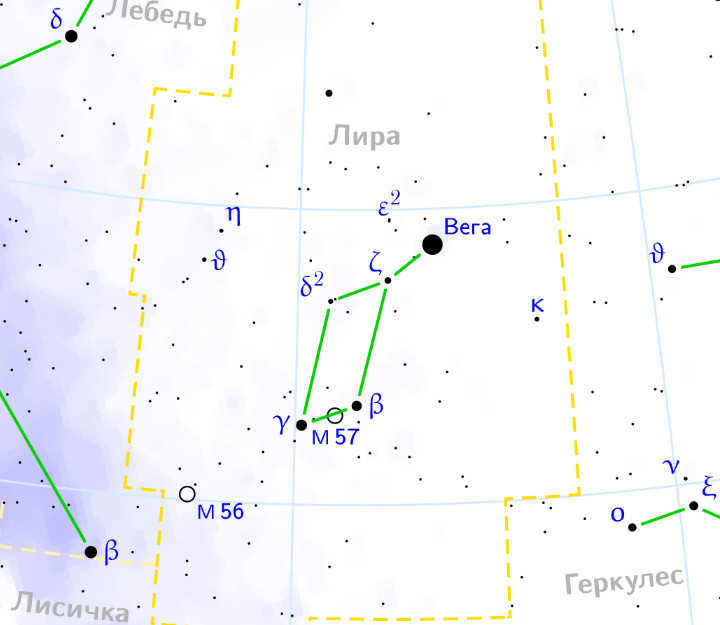
Vega, the brightest star in the constellation Lyra, holds the position of the alpha star and is second only to Arcturus in terms of brightness. For astronomers, it is crucial as a reference point, serving as a standard for zero magnitude. Positioned at a distance of slightly over 25 light-years away from the Sun, Vega stands out as a main-sequence star and one of the most luminous stars belonging to Class A. Despite its young age of only 400-500 million years, it already outshines the Sun by a factor of 40.
Capella
Capella is a star system located in the constellation Auriga. It is one of the brightest stars in the night sky and is visible from both the Northern and Southern Hemispheres. Capella is actually a multiple star system, with four individual stars making up the system. The two brightest stars, Capella Aa and Capella Ab, are giant stars that orbit each other every 104 days. The other two stars, Capella H and Capella L, are much smaller and orbit the main pair at a much greater distance. Capella has a yellowish color and is approximately 42 light-years away from Earth. It is a popular target for amateur astronomers due to its brightness and accessibility.
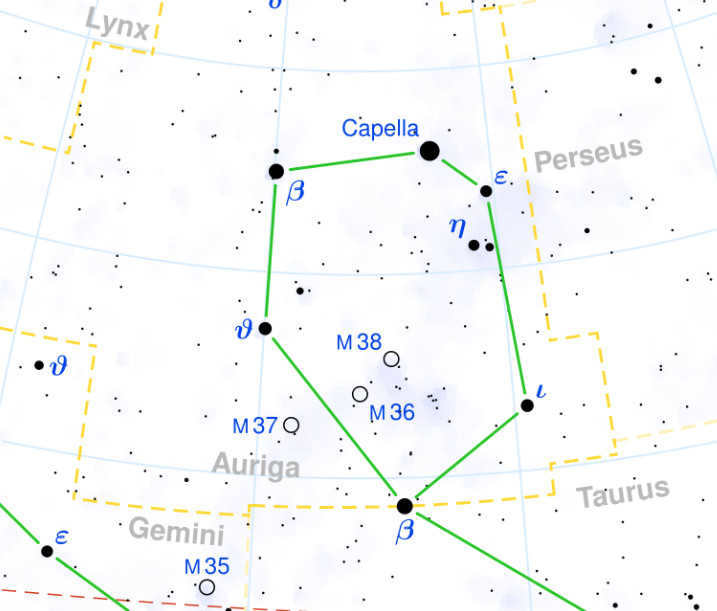
The brightest stars in the night sky have unique characteristics that make them stand out. One such star is Alpha, which belongs to the constellation of Ascendant. Interestingly, Alpha is not just a single star, but a double star system consisting of two red giants. Despite having a surface temperature similar to the Sun’s, each star in this system is nearly 80 times brighter than our Sun. Due to their close proximity to each other, the stars orbit each other at a distance of 100 million kilometers. This close arrangement often leads observers on Earth to mistake them for a single star. Alpha is located 42 light-years away from our planet.
Mu Cepheus
Mu Cepheus, located in the constellation Cepheus, is a red supergiant star that stands out as one of the most massive and brilliant stars within our galaxy. This magnificent star sits at a staggering distance of 6,000 light years away from us. With a mass equivalent to 20 times that of the Sun and a radius reaching a remarkable 1,420 times that of the Sun (equivalent to approximately 988,036,000 kilometers), Mu Cepheus truly dwarfs our own star. Its surface temperature is estimated to be around 4,000 degrees Celsius.
As it approaches the end of its life, Mu Cepheus is currently in a stage where it is burning carbon and oxygen. The helium-carbon cycle indicates that this star is in its final phase and may soon undergo a supernova explosion. In terms of brightness, Mu Cepheus shines an astonishing 38,000 times brighter than the Sun.
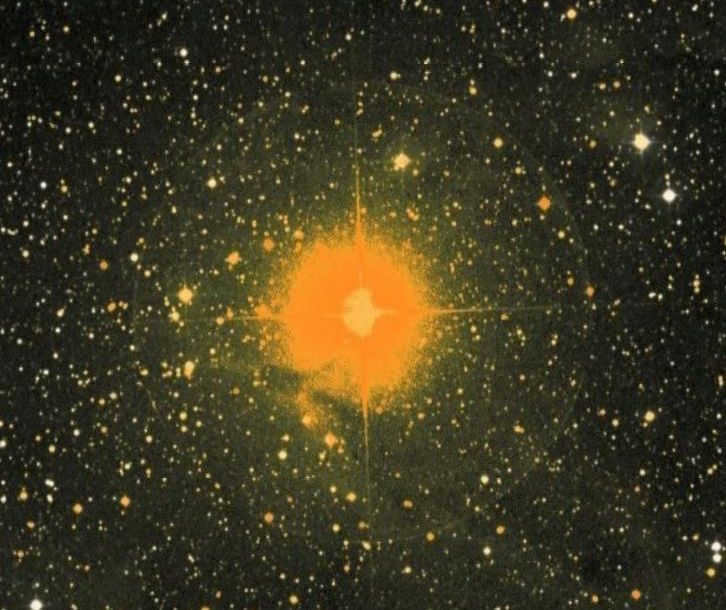

The celestial body Betelgeuse
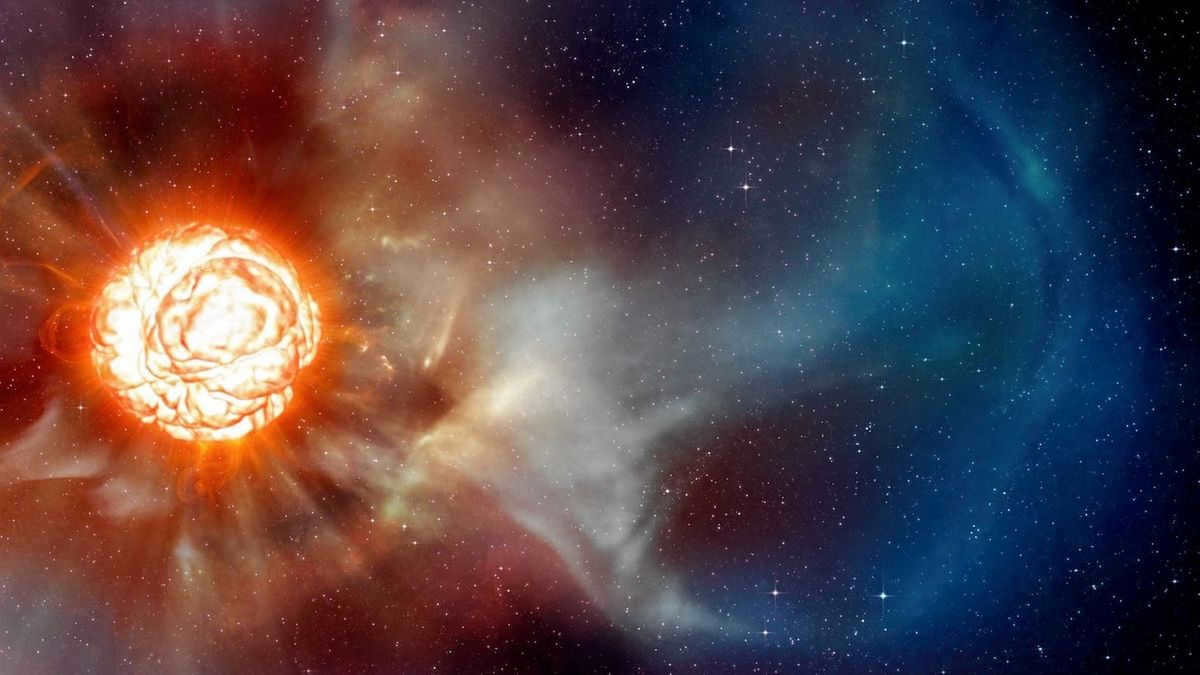
Betelgeuse, which is the ninth most luminous star in the night sky and the second most luminous star in the Orion constellation, is a red supergiant. Situated 640 light-years away from Earth, it boasts a mass 20 times that of the Sun. The radius of Betelgeuse is approximately 820,700,000 kilometers, which is 1,200 times the radius of our Sun. With a surface temperature of around 3325ºC, the red giant’s lifespan is expected to come to an end in the near future.
| Observational data (J2000.0 epoch) | |
| Distance | Approximately 724±133 light years (approximately 222 parsecs). |
| Visible stellar magnitude (V) | +0.2 — +1.2 |
| Constellation | ryonO |
| Physical characteristics | |
| Mass | 1.531E31 kg, 13-17 times the mass of the Sun |
| Radius | 950 – 1200 times the radius of the Sun |
| Age | 10 million years |
| Temperature | 3325 degrees Celsius |
| Luminosity | 40,000-100,000 times the luminosity of the Sun (bolometric) |
Akruks
can be paraphrased as
Akruks
in English.
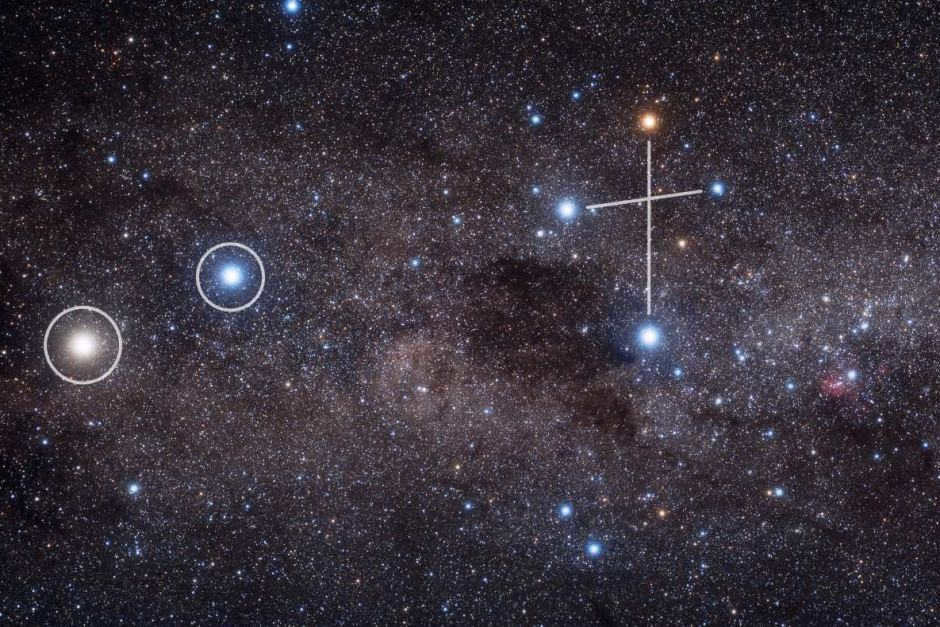
The distance from Earth to Acrux, also known as Alpha of the Southern Cross, is about 320 light years. It has a visible magnitude of +0.76.
Acrux is a star system located in the constellation Southern Cross. It consists of at least five separate stars. Acrux A and Acrux B are two stars that form a close binary system. They are accompanied by the distant Acrux C, and together they form a triple star. Both Acrux A and Acrux B are double stars on their own.
With a total visual magnitude of 0.76, Acrux is the brightest star in the Southern Cross constellation and the 13th brightest star in the night sky. It is the southernmost first magnitude star and can only be seen south of 27°N.
Westerlund 1-26, also known as W26, is positioned at the periphery of the Westerlund 1 cluster and belongs to the category of red supergiants or red hypergiants. This remarkable celestial body holds the distinction of being one of the most immense stars ever discovered. Although the exact measurement of its radius remains somewhat uncertain, experts estimate it to fall within the range of 1530-2550 solar radii, which is equivalent to 1.06×10^9-1.77×10^9 km or 7.1-11.9 astronomical units. This voluminous radius corresponds to a staggering 3.6-16.6 billion times the size of our Sun. If these estimations prove to be accurate, placing W26 at the center of our solar system would result in its photosphere engulfing the orbit of Saturn.
W26 shines with an extraordinary brightness, measuring 320,000-380,000 times greater than our Sun. Furthermore, it is approximately 1,550 times larger in size than our home star. The temperature of W26’s surface fluctuates between 3,200°C and 3,400°C. These substantial characteristics firmly establish W26 as one of the most radiant red supergiants and align it with the estimations for VY, another renowned red supergiant star situated within the Big Dog constellation.
Rigel
is the name of a star in the constellation Orion.
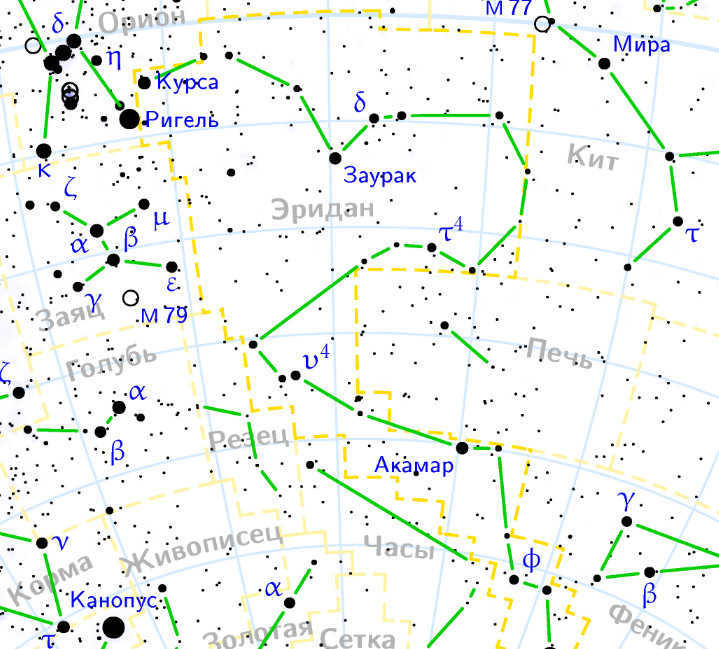
This star is the second largest in the constellation Orion and is known as Betelgeuse Alpha. It is not as bright as Rigel, but it is the last star before the outburst. Its distance from us is much greater, about 860 light years. Rigel, on the other hand, has a higher brightness and a surface temperature of over 12,000 K.
Rigel is a blue-white supergiant, shining 130,000 times brighter than our Sun. It is also one of the most massive stars in our galaxy. If Rigel were to replace the Sun in our solar system, the Earth would have long been vaporized and dissipated due to its intense heat.
Aldebaran
Aldebaran is a massive star situated in the Taurus constellation, approximately 65 light-years distant. This orange giant star dwarfs our Sun, being 45 times bigger, with a radius of around 30,740,000 kilometers. Its surface temperature measures approximately 3,700 degrees Celsius. The luminosity of Aldebaran surpasses that of the Sun, shining with a brilliance 425 times greater.
The celestial body VV Cepheus
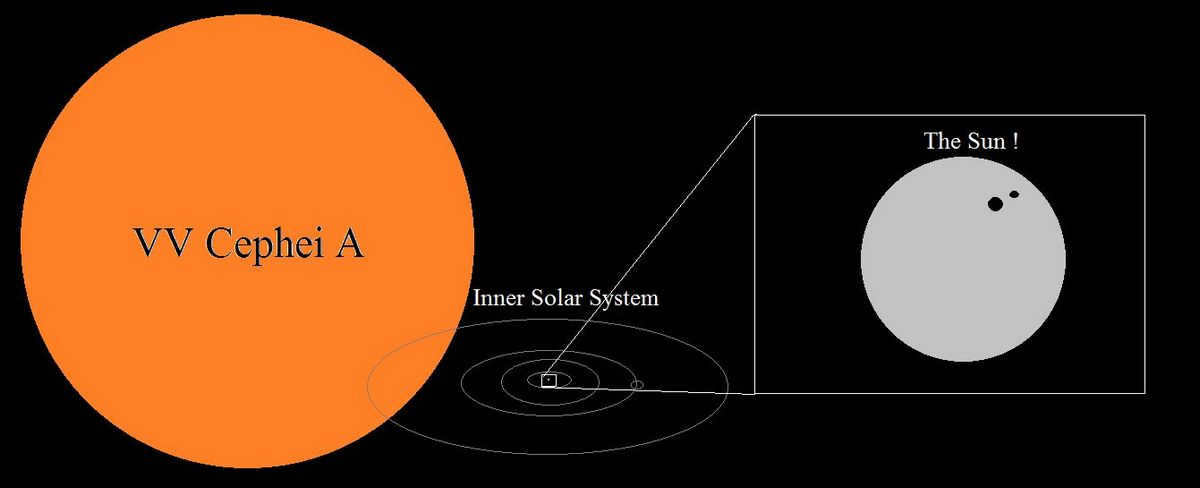
Located in the constellation Cepheus, VV Cepheus is a star that is approximately 4,900 light years away from Earth. It is also referred to as HD 208816 and has a surface temperature of around 3,325º C. This particular red hypergiant star is believed to have a radius that is between 1,050 and 1,100 times larger than that of the Sun. The diameter of this star measures about 2,436,875,000 km.
| Observational data (epoch J2000.0) | |
| Distance | Approximately 5000 light years |
| Visible stellar magnitude (V) | 5.18 |
| Constellation | Cepheus |
| Physical characteristics | |
| Mass | |
| Radius | 1050-1900/8 times the radius of the Sun |
| Age | 25 million years |
| Temperature | Around 3325ºC |
| Luminosity | 200000-320000/around 10000 times the luminosity of the Sun |
VY Big Dog star
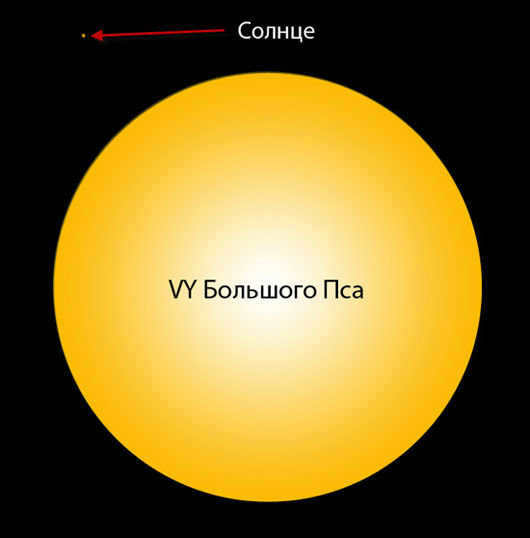
VY Big Dog is a red hypergiant situated in the constellation Canis Major. It holds the title for being the largest star in terms of size and one of the most luminous stars in its category. With a radius approximately 1540 times that of the Sun and a mass 25 times greater than our own star, VY Big Dog shines about 270,000 times brighter than the Sun. To put this into perspective, if VY Big Dog were part of our solar system, it would extend beyond the orbit of Saturn. This remarkable star is positioned 4,900 light-years away from Earth.
| Observational data (epoch J2000.0) | |
| Distance | Approximately 1,488 seconds (about 1,170 parsecs). |
| Apparent stellar magnitude (V) | 7.9607 (varies from 6.5 to 9.6) |
| Constellation | Canis Major |
| Physical characteristics | |
| Mass | 17 ± 8 solar masses |
| Radius | 1420 ± 120 solar radii |
| Temperature | 3275ºC |
| Luminosity | Approximately 270,000 times the luminosity of the Sun |
| Properties | g=2.17921*10^6 |
Until recently, these stars held the record for being the largest known stars in the universe. However, scientific progress never stops, and new stars have been discovered that will surpass the current top ten. Let’s take a look at the contenders…
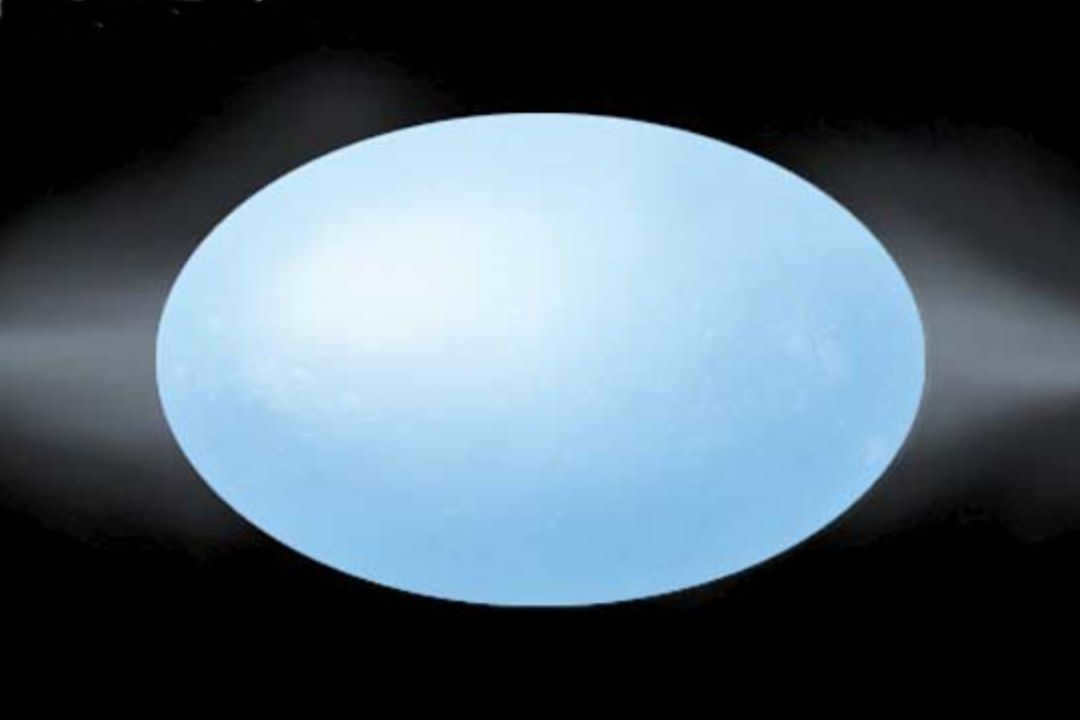
Distance between Earth and Ahernar is approximately 139 light years.
Magnitude visible from Earth is +0.46.
Ahernar, also known as Alpha Eridanus, is a binary star system situated in the constellation Eridanus. This system consists of two stars, Alpha Eridana A and B. The brighter star, Eridana A, is classified as a B-type main-sequence star, making it one of the most luminous stars known.
Ahernar is about 3150 times brighter than the Sun and has a mass about seven times greater. It is best observed from the southern hemisphere at a latitude of 33 degrees south, and becomes invisible when observed above 33 degrees north latitude.
Antares
Antares, located in the constellation of Scorpius, holds the title of being the most luminous star. It is an impressive 850 times larger than our Sun in terms of radius and a staggering 12 times more massive. Its brilliance outshines our Sun by a factor of 57,500. If we were to place it at the center of our solar system, it would extend all the way to Mars. Antares is situated at a distance of 600 light years from Earth. In the future, it will undergo a supernova explosion, captivating astronomers for millions of years to come. Its surface temperature reaches an astounding 18,500 degrees.
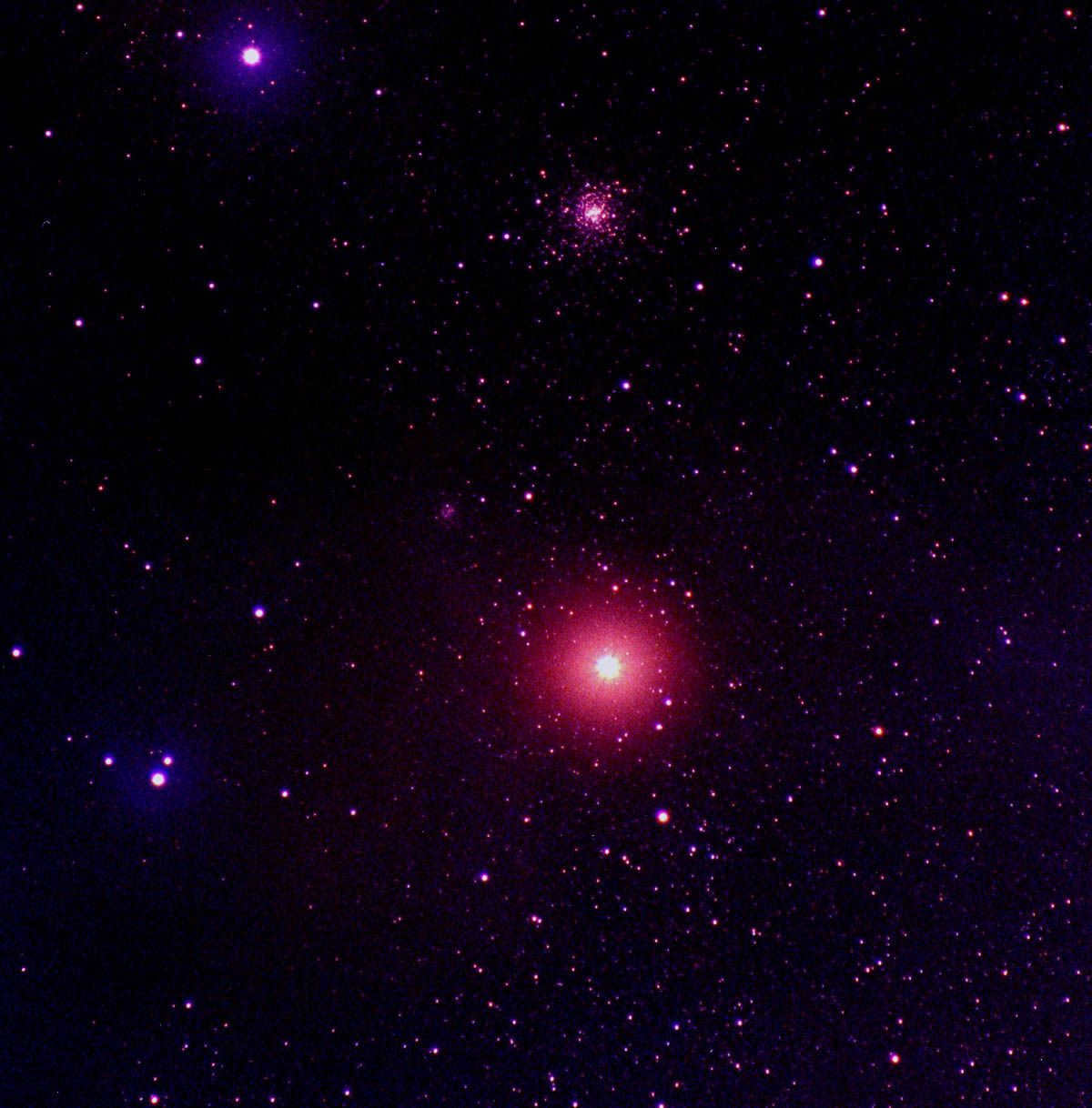
Procyon Star
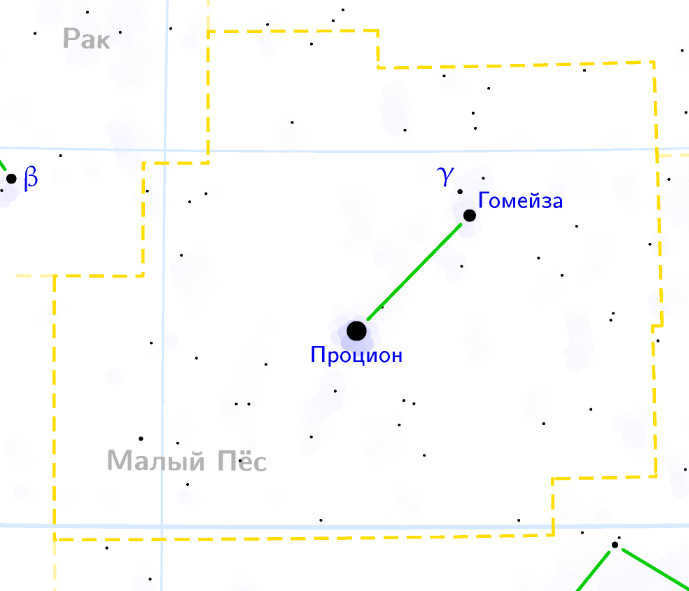
Alpha Minor is a relatively modest star, belonging to the F-class category, and it shines just 40% brighter than the Sun. This star is at the verge of depleting its hydrogen reserves and transitioning into a red giant phase. Procyon, on the other hand, is currently 7 times more luminous than the Sun and located 11.5 light years away from us. Its relatively close distance enables its inclusion in this list of the top 25 brightest stars in the night sky.
SN 1987A: The Supernova of 1987.

A supernova that occurred in close proximity to Earth, approximately 168,000 light years away, has been observed. The light emitted from the explosion, which took place on the outskirts of the Tarantula Nebula, reached our planet in 1987.
Remarkably, the brightness of the explosion, which reached its peak in May 1987, was visible to the naked eye.
The remarkable beauty of SN 1987A can be attributed to the presence of two rings with low luminosity. These rings are symmetrically positioned in space around the origin of the explosion, which was the blue supergiant star Sanduleak. As these rings cool down, particles and dust are formed through the combination of carbon, silicon, and oxygen atoms. Astronomers are closely observing the site of the supernova, although as of now, neither the neutron star nor the black hole associated with the explosion have been detected by scientists.
G1.9+0.3
can be paraphrased as “G1.9+0.3 is an astronomical object.”
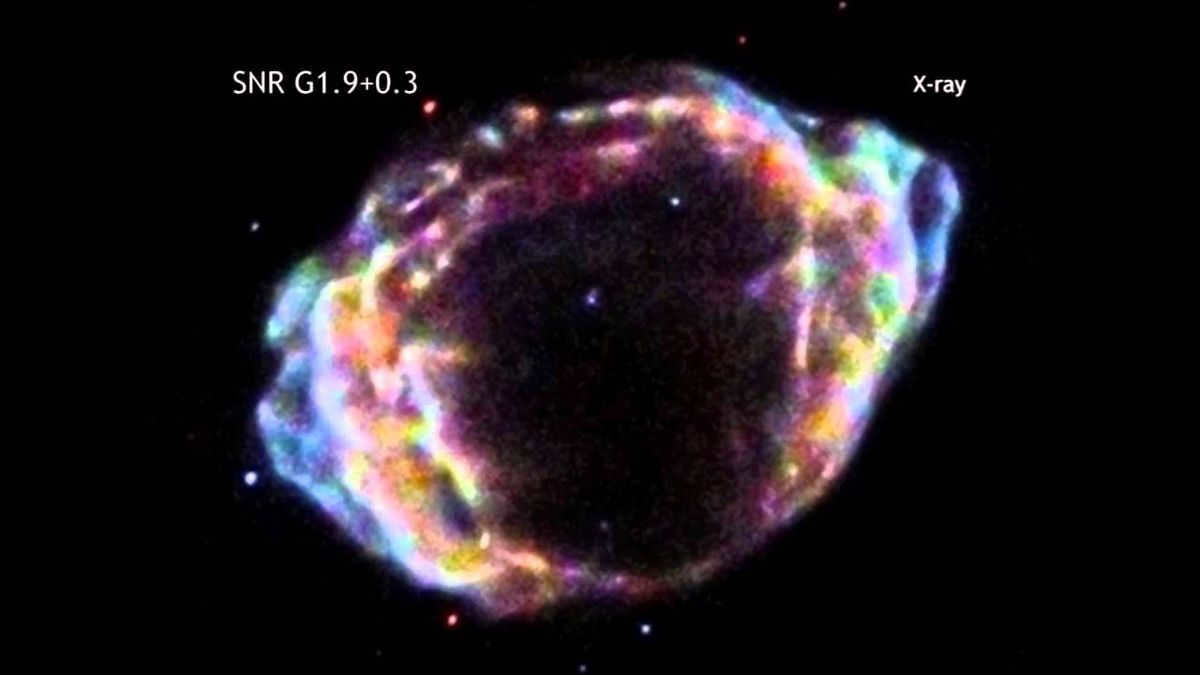
G1.9+0.3, located in the Sagittarius constellation, is a star that underwent a supernova explosion approximately 25,000 years ago, making it the youngest star known to scientists.
The light emitted from this event reached Earth in 1868, despite being 25,000 light-years away. However, the observations made at that time were hindered by the presence of gas and dust clouds.
In 1985, astronomers identified G1.9+0.3 as a prominent radio source. Comparisons between various images have revealed that the remnants of the supernova are moving through space at incredibly high speeds, reaching up to 56 million kilometers per hour.
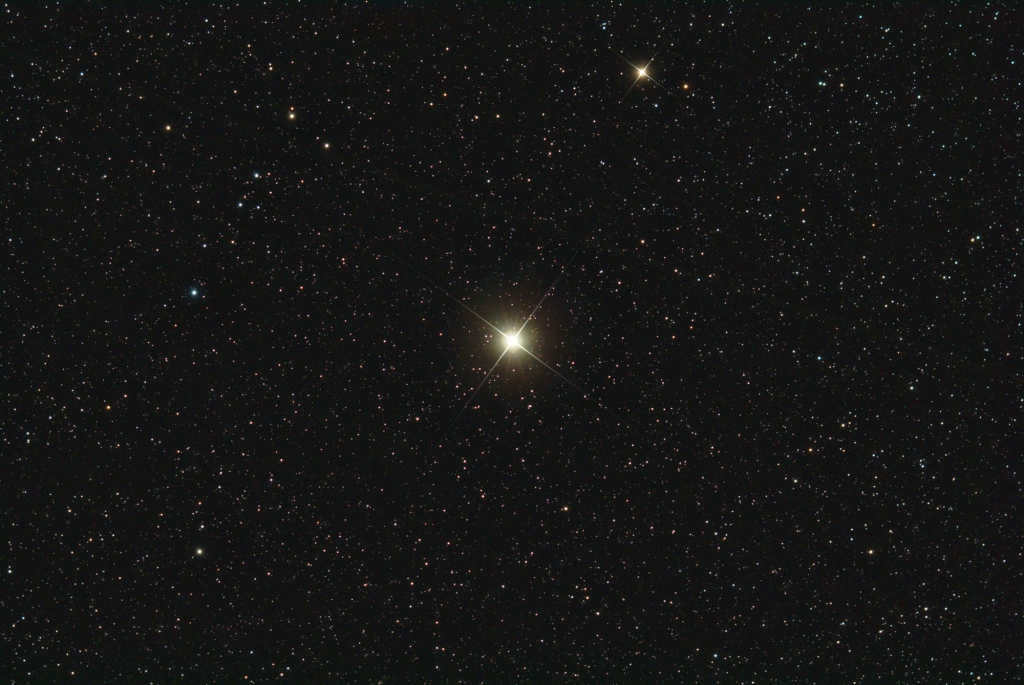
Pollux, the most brilliant celestial object in the Gemini constellation, possesses an immense size, surpassing the Sun in magnitude. Classified as an orange supergiant, this astronomical body is anticipated by scientists to undergo a transformative process, evolving into a white dwarf in the forthcoming 100 million years. With a radius equivalent to approximately 8.8 times that of the Sun, Pollux spans a staggering distance of 6,120,400 kilometers. Its diameter, in turn, measures about 12,240,800 kilometers. Even if Pollux were to occupy the Sun’s position, Mercury would remain unaffected, aside from a slight increase in temperature.
Toliman
can be rephrased as “The star Toliman is also known as Alpha Centauri B” or “Alpha Centauri B is another name for Toliman”.
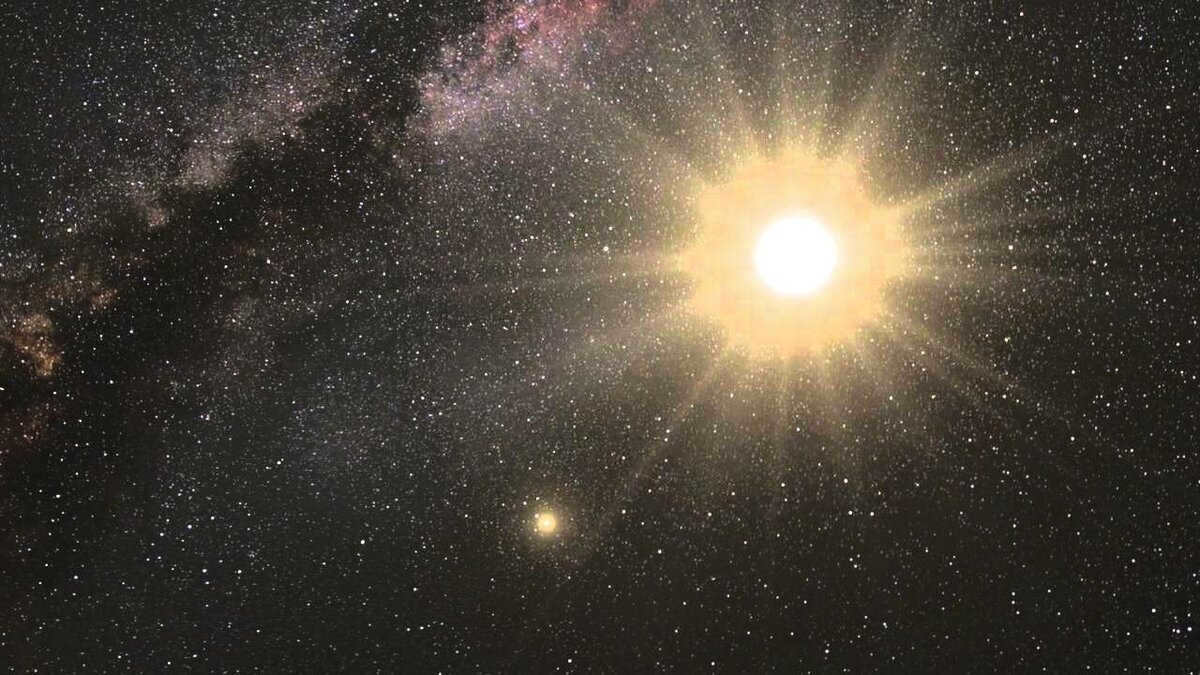
In popular culture, we often refer to this celestial body as Alpha Centauri. Interestingly, in many children’s games featuring extraterrestrial beings, these imaginary creatures are often said to come from this particular star. Alpha Centauri, which is the closest star system to our own, has also been prominently featured in works of science fiction literature and on the silver screen.
What makes the double star system in Centauri truly remarkable is its unique structure. From our perspective on Earth, the two stars, Alpha and Beta, appear as a single star. Toliman, one of the stars in this duo, bears striking similarities in terms of its structure and properties to our very own Sun. It boasts a mass that is 10% greater than that of the Sun and a radius that is 22% larger.
The star system that is currently forming has been in the process for approximately 6 billion years, making it 2.5 billion years older than our own solar system. Revolving around this binary star system is an additional star known as the Proxima Centauri, which is a red dwarf. It maintains a relative distance from the Centauri stars and completes one orbit around them every half a million years.
According to scientists, astronauts, and space engineers, Alpha Centauri is likely to be the first celestial object reached by an interstellar spacecraft. Many of us eagerly anticipate the launch of these spacecraft in the hopes of witnessing this historic event.
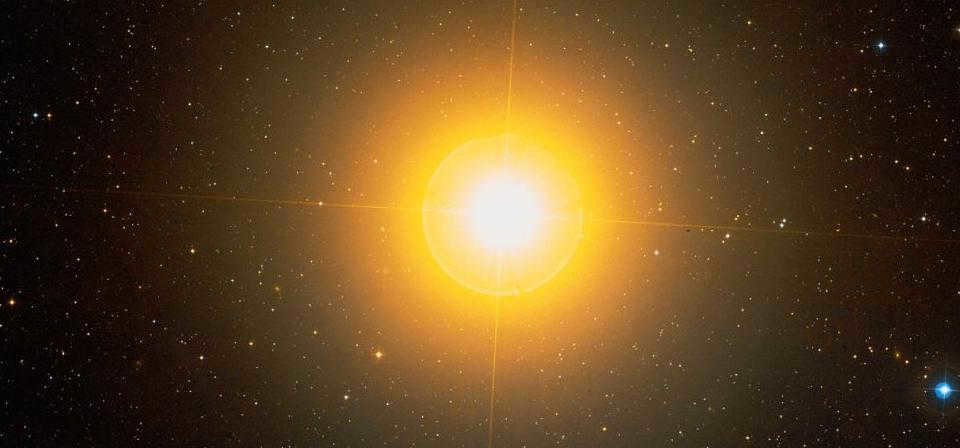
Aldebaran, similar to Arcturus, is a massive orange star. It is additionally one of the most luminous stars in the celestial sphere. The dimensions of this star amount to 44.2 solar radii, which is equivalent to 30,741,100 kilometers. Consequently, if it were placed within our solar system, it would stretch halfway between the Sun and Mercury. Undoubtedly, Mercury ought to be apprehensive at this point. Should this trend persist, there will not be ample space remaining….
LP 40-365
can be paraphrased as
LP 40-365
is able to be rephrased
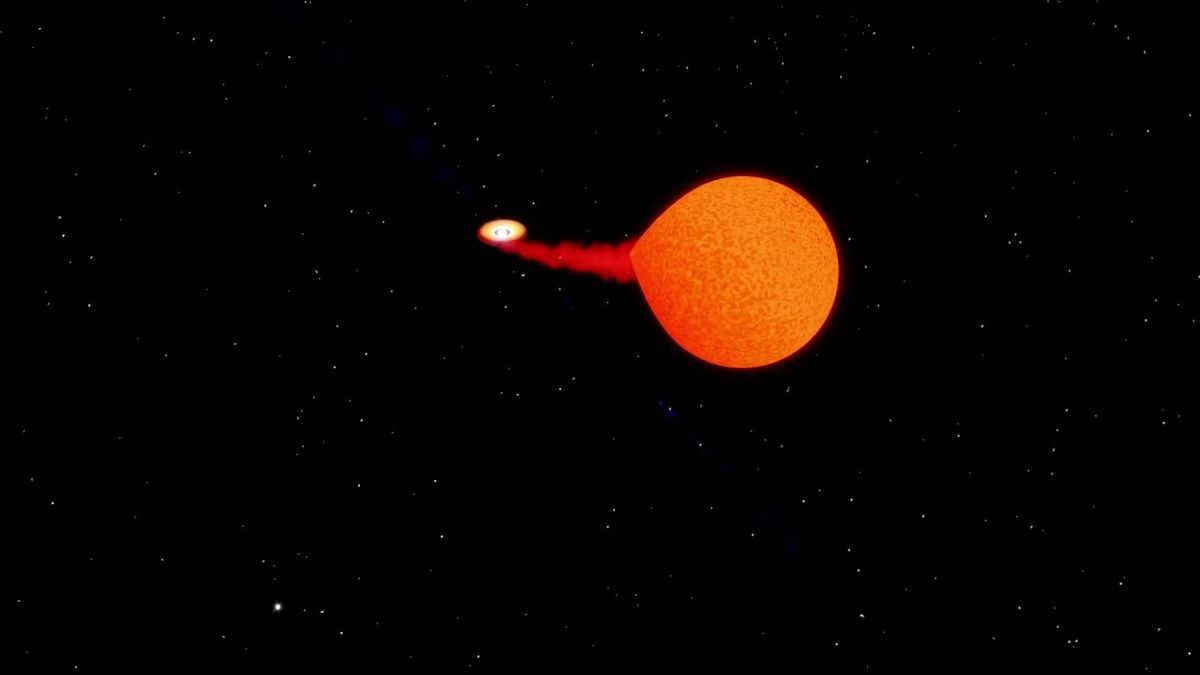
In the vast expanse of the Universe, it is a frequent occurrence for celestial bodies to come together and form binary star systems, engaging in a mesmerizing cosmic ballet. Occasionally, these stars become inexorably drawn towards each other, their gravitational forces pulling them closer and closer. As a result, one star may gradually begin to accumulate some of the material from its companion star.
This is the exact scenario that unfolded with the white dwarf LP 40-365, which had been consuming the mass of its neighboring star over a long period of time. Typically, when white dwarfs accumulate excess mass, it triggers fusion processes that result in the release of immense amounts of energy. This ultimately leads to a supernova explosion, which typically obliterates the star entirely. However, LP 40-365 defies this norm. Following the explosion, it managed to retain the majority of its mass, while also gaining an unprecedented velocity. Similar to a projectile, the star rapidly accelerated to a speed of 500 kilometers per second, positioning itself for an eventual escape from the confines of the Milky Way. Such peculiar stars are exceedingly rare within the vast expanse of the Universe!
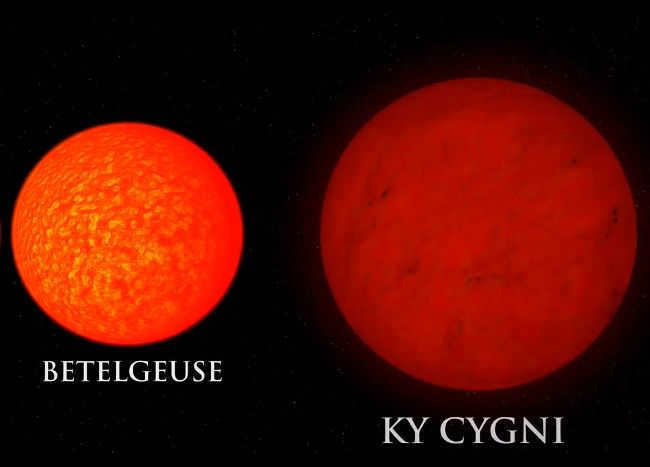
This enormous star is situated roughly 5,000 light years distant from our location. Judging by its title, it is quite apparent that this celestial body can be found within the constellation known as the Swan.
With a mass 25 times greater than that of our very own Sun, and a luminosity ranging from 270,000 to 1.1 million times that of the Sun, this hypergiant shines brightly in the night sky.
The Sun

Every individual on the planet cannot deny the fact that the Sun is the most stunning star, particularly during sunset and sunrise. It is not safe to observe the Sun at other times without proper equipment as it can harm your eyesight.
The star that provides warmth to our Earth is relatively young, approximately 4.6 billion years old. By comparing it to other similar celestial bodies, scientists have proposed that the Sun is currently in the middle of its lifespan. Additionally, it is the solitary star in our solar system, exerting its gravitational force on planets, moons, and comets.
When the Sun reaches an age of 10-12.5 billion years, it will have expanded enough to become a red giant. At this stage of its evolution, the Sun will have enlarged to the extent that it reaches the orbit of Earth.
One of the most mesmerizing events that inhabitants of Earth have the privilege of witnessing are solar eclipses.
Being the closest celestial body to us, the Sun holds a sacred status among the diverse cultures that call our planet home. In Slavic folklore, the sun deity is known as Dazhbog, while the god of the solar disk is called Khors. The name of the first god is derived from the phrase “God who grants life,” symbolizing the Sun.
The captivating tale of Phaeton, who embarked on a cosmic journey aboard a solar chariot, is also intricately linked with the Sun.
Throughout history, humanity has continuously been captivated by the mesmerizing expanse of the celestial heavens. Even in the primitive days of the Stone Age, when our ancestors sought shelter in caves and adorned themselves in animal skins, they would instinctively gaze upwards at the night sky, marvelling at the radiant lights that adorned it.
Presently, the allure of the stars has not diminished. We are well aware that the Sun shines the brightest among them all. However, what are the names of the other luminous celestial bodies that grace our night sky alongside the Sun?
1. Sirius
Sirius, the brightest star in the night sky, has a luminosity that is only 22 times greater than that of the Sun. However, due to its close proximity to Earth, it appears much brighter than other stars. Sirius can be observed from all around the world, with the exception of the northern regions.
In 1862, astronomers made an intriguing discovery – Sirius has a companion star. Both stars orbit around a common center of mass, but only Sirius A is visible from Earth. Scientists predict that Sirius is gradually moving closer to the Sun, and its current speed is 7.6 km/s. As a result, Sirius will continue to increase in brightness over time.
Canopus is a member of the constellation Carina and serves as the second most luminous star after Sirius. It is categorized as a supergiant, surpassing the Sun in size by 65 times.
Out of all the stars located 700 light-years from our planet, Canopus possesses the highest luminosity, although it does not appear as bright as Sirius due to its distance. In the past, mariners relied on Canopus as a navigational reference point before the invention of the compass.
3. Toliman
Toliman, also referred to as Alpha Centauri, is a binary system comprised of stars A and B. The proximity of these stars is so close that they cannot be discerned without the aid of a telescope. One of them, Alpha Centauri A, is the third brightest star in the night sky.
Within the same system exists another star – Proxima Centauri. However, it is typically regarded as a separate entity and does not rank among the top 25 stars in terms of luminosity.
4. Arcturus
Arcturus is a member of the orange giant stars and outshines the other stars comprising the Volopassus constellation. It can be observed at different times of the year in various regions of the Earth, but it is always visible in Russia.
Astronomers have noted that Arcturus is a variable star, meaning it fluctuates in brightness. Its luminosity changes by 0.04 star magnitude every 8 days, which is attributed to surface pulsation.
5. Vega
Vega, the fifth brightest star, is a member of the Lyra constellation and has been extensively researched, second only to the Sun. It is located relatively close to the Solar System, at a distance of just 25 light-years, and can be seen from any location on Earth except for Antarctica and the northern parts of North America.
Vega is encompassed by a disk composed of gas and dust, which emits infrared radiation when it interacts with the star’s energy.
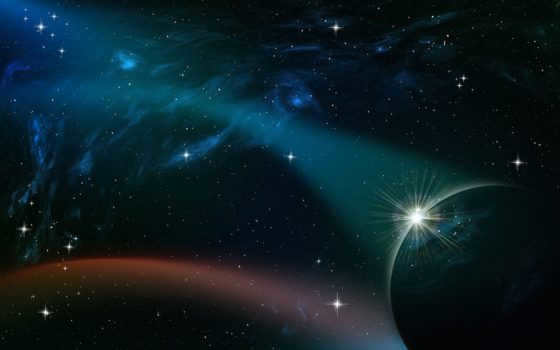
From an astronomical perspective, the star is captivating due to its unique double system. Capella consists of two colossal stars that are separated by a staggering distance of 100 million kilometers. One of these stars, Capella Aa, is in the twilight of its existence, gradually fading away.
On the other hand, the second star, Capella Ab, continues to radiate with a vibrant luminosity. However, scientists suggest that it has already completed the processes of helium synthesis. It is only a matter of time before the outer layers of these stars expand and come into contact with each other.
7. Rigel
Rigel has a luminosity that is 130,000 times greater than the Sun. It is classified as one of the most dominant stars in the Milky Way galaxy. However, due to its considerable distance from the Solar System (773 light-years), it is only ranked seventh in terms of brightness.
Similar to Arcturus, Rigel is categorized as a variable star and undergoes periodic fluctuations in its luminosity every 22 to 25 days.
8. Procyon
The distance of Procyon from Earth is merely 11.4 light years. Its system comprises of two stars, Procyon A (brilliant) and Procyon B (dim). The former is a yellow subgiant and radiates approximately 7.5 times more brightly than the Sun. Due to its advanced age, it will eventually begin to expand and radiate significantly brighter.
It is hypothesized that at some point it will expand to 150 times its current size and then adopt an orange or red hue.
9. Ahernar
Ranked ninth among the 10 most luminous stars in the celestial sphere, Ahernar stands out as the hottest and bluest. Nestled within the Eridanus constellation, this star radiates a brilliance that surpasses that of the Sun by a factor of 3000.
One captivating aspect of Ahernar lies in its extraordinary swiftness of spin, which gives rise to its elongated form.


